|
Red-breasted Nuthatch digging out a nest on Mt Lemmon, May 20, 2023. Nuthatches pursue home improvement! Male Red-breasted carves a nest in a snag.On May 20th, based on a tip from good birding friends, we ventured to the top Mt. Lemmon just a short distance from the Sky Center looking for a Red-breasted Nuthatch (RBNU) digging a nest. Not far from the road we found a male RBNU peeking out from a hole in a dead snag. We watched as he repeatedly disappeared into the tree and emerged with a mouth full of wood chips, paused, and blew them into the air! Canon R6 with RF 100-500mm & RF1.4 extender at 700mm, 1/1000 sec., f/20, ISO 25600. He would then turn around, head back into the hole and repeat the sequence tirelessly. That is to say, we tired of watching him before he tired of digging! A little research revealed that RBNU nests are built by males and females, although a male on his own may build up to 4 nests, and show them to his mate, who then picks one. This is a male, and this nest is probably one of several he had under construction in May. Birds are born to do 4 things, 2 on a daily basis (eat and don't get eaten) and 2 on an annual basis (make more birds, and molt). When the hormones kick in each spring, caution is thrown to the wind and otherwise foolhardy and inefficient behavior, like building 4 nests rather than one, can become the norm. Day to day in the off season, it would be; save energy, keep out of sight, and find food! 3 weeks later, surprise! Pygmy Nuthatches move in!I returned to the same spot three weeks later fully expecting to see two RBNUs starting a family. Yes, there were two nuthatches there, but they were Pygmy Nuthatches (PYNUs)! It appears that the RBNU male's mate did not like these digs (so to speak), and chose a home in a better neighborhood! That left a fully dug out nest unoccupied, which the PYNUs decided looked just fine! Successful breeding is a lot about timing and efficiency, so if you don't need to dig your own nest, all the better! The 2 PYNUs were flying in and out of the nest while we were watching. Below, one of them (the two sexes look the same) is peeking his or her head out of the hole. Canon R6 with RF 100-500mm & RF1.4 Ext. at 700mm, 1/1250 sec, f/10, ISO 3200. Several minutes later a female (I know this is a female, you will see why in a minute) lands by the hole and peers in, maybe looking for the male? "I know he is here somewhere, I just saw him . . . . Yoo-hooo!! Where are you? Come-on, time to make more birds! . . . " Females will raise their tails and extend the wings as part of courtship behavior. Here she is trying to get the males attention. For readers interested in all the details of a bird's life, including courtship and nesting, I highly recommend an annual subscription to the Cornell Lab's Birds of the World, which provides the research details that are otherwise summarized in All About Birds. In the images that follow, she continues to look for the male in all directions. The hole to the nest is in the left upper corner of each frame. She finally flys up next to the hole, continuing her courtship behavior. The male peeks out from the hole (he was hiding in the nest the whole time!) and flys down and to the right, images below. Shortly after the I captured these images the pair flew off stage to the left, perhaps to get away from prying eyes and the avian paparazzi! To be continued . . . . . Hairy Woodpeckers start a family around the corner, and keep the food coming!Canon R6 with RF 100-500mm & RF1.4 Ext. at 420mm, 1/2000 sec, f/8, ISO 2500. Around the corner from the PYNU nest we found a Hairy Woodpecker (HAWO) nest with mom and dad working diligently to feed an unseen set of nestlings inside. Above is a male with his characteristic flash of red on the top of the head with food in his mouth, keeping an eye out for predators. Below is the female in a similar pose. It was late in the afternoon close to the Sky Center and the sun was lighting up this side of the tree. One or the other would arrive with food about every 10 to 20 minutes. Mom is leaning in with take-out. In the series that follows, the female is taking off possibly with a fecal sac* in her bill. *For more on fecal sacs, keep reading! Canon R6 with RF 100-500mm & RF1.4 Ext. at 480mm, 1/2000 sec, f/10, ISO 5000. HAWOs live year round throughout the lower 48 states, Canada, and Alaska. They are pretty flexible in regard to habitat. They prefer mature woodlands with medium to large trees, but also live in parks and cemeteries. In Arizona they prefer coniferous forests (trees with cones) and have been observed to nest as high as 11,000 feet in New Mexico. In Arizona they will nest at altitude, then move to lower elevations with their fledglings. HAWOs eat insects, especially larvae of bark beetles. When there is an infestation of bark beetle, HAWOs often appear in large numbers to eat the larvae and will nest in these areas with good success. It may be bark beetle larvae that they are shuttling in to their young. Lots of food is a predictor of breeding success. Reference: Birds of the World. Special thanks to Marty and Jim Herde for their help finding these nest sites and for their updates on nesting progress. And, thanks to Jeff Babson for his help with male RBNU nest building behavior. Some cavity nesters like their own small cabins: Western Bluebirds nest in boxes in Summerhaven, June 2022.Above, a mama Western Bluebird (WEBL) is drying off after a bath likely in Sabino Creek (at its origin!) in June of 2022. She is likely the mama in the nest featured here, and taking a short rest from her domestic duties. Female WEBLs are duller than the males, with gray-buff dominating with a pale orange wash on the breast, and blue tints on the wings and tail. For years some local residents in Summerhaven have put out nest boxes for the Western Bluebirds (WEBL). WEBLs are cavity nesters, and if they cannot find a natural cavity, for example an unused Acorn Woodpecker hole, they won't breed at all. So, nest boxes increase the options and help to keep the generations coming. This is very important in an era when global climate change is impinging on habitat with loss of both food and nesting spots. My thanks to all who promote local bird populations by providing nest boxes. Below, likely the same female as pictured in the lead is bringing a big bug to her hatchlings on Loma Linda Extension Road. During the summer WEBLs eat mainly insects, during the winter they switch to fruits and seeds. The protein in the insect diet (grasshoppers, caterpillars, beetles, ants, wasps, and pillbugs) is important for growing hatchlings. Canon R6 with RF 100-500mm at 500mm, 1/1000 sec, f/8, ISO 2500. As she lands she shows off her gray-buff body with blue tints on the wings and tail. Always cautious of predators, she checks out the area before she leans into the nest. She leans in to feed her chicks . . . and Comes back up with a fecal sac, an avian version of a diaper! Some species as hatchlings make a membranous sac that coats the solid and liquid waste so mom and dad can take them out of the nest to keep the nest clean and odor free. Below, she takes off with her bundle. For all the new moms and dads reading this post who are not thrilled with diaper duty, aren't you glad you have two hands to carry it to the trash? While I observed, both the male and female made repeated runs to the nest box bringing in food, and often leaving with nest sacs. Note: as the birds grow older, they lose the ability to create the sacs. Below is an image of the male, to prove that they were both there on duty! Western Bluebirds (WEBLs) live along the U.S. Pacific coast and the Pacific NW as well as portions of Utah, Colorado, Arizona, New Mexico and central Mexico. In some areas they live year round, or are short range migrants. In SE Arizona we see them nesting on Mt Lemmon in the summer, and wintering in Tucson. In fact, in January of this year I posted on Sabino Canyon and Western Bluebirds, Winter 2023. That post shows wintering WEBLs in Sabino Canyon and near the Rillito River, as well as the images shown here which I have pulled out of the archive because hey, its June and everybody is nesting! So for the avid followers of this blog (both of you), yes, you have seen these pictures before! That's it for our cavity nesters for now. More coming soon. Happy Trails!
8 Comments
Canon R6, RF 100-500 + RF 1.4x Extender, 700mm, f/10, 1/800 sec, ISO 2000, +1EV. Birds are born to do 4 things: Eat, don't get eaten, make more birds, and molt! Getting lunch before being lunch is a daily challenge whereas breeding successfully is a yearly activity, usually in the spring. Molting usually occurs each year after breeding is over, and for some species there is a second molt for breeding plumage. When it comes to nesting, each species is a bit different. The species can build a nest in a tree or bush (American Robins), or on a house or platform (Cordilleran Flycatchers) , or on the ground (Red-faced Warblers). The one other mode that is fairly common is nesting in a cavity, perhaps a tree or cactus (Gila), maybe on a cliff (swallows), or in a nest box provided by you and I (Western Bluebird). So, let's take a look at cavity nesters in our area. I am going to start with the Gila Woodpecker, one of our regulars in the Sonoran desert. On May 6th I had the privilege and pleasure of leading a field trip for the 2023 NANPA (North American Nature Photography Association) Summit, which met here in Tucson at the Westin La Paloma. The morning of the 6th, 8 photographers from all over the U.S., including Tucson, met at Agua Caliente County Park on East Roger Road at 6:30 am, to greet the rising sun and all the critters who were waking up to start the day right with food and water. As we walked the northwest portions of the park we found a male Gila Woodpecker diving into Saguaro flowers and getting his face fully covered with pollen. Canon R6, RF 100-500mm + RF 1.4x Extender, 454mm, f/10, 1/6400 sec, ISO 3200, +2/3 EV. Richard Cachor Taylor lists 12 species of woodpecker in his field guide Birds of Southeastern Arizona: Lewis', Acorn, Ladder-backed, Gilded Flicker, "Red shafted" Northern Flicker, Hairy Woodpecker, Arizona, 4 Sapsuckers (Yellow-Bellied, Red-naped, Red-breasted, and Williamson's) and the Gila Woodpecker!
Gila's eat a large variety of insects, as well as berries, and cactus fruit. They will frequent hummingbird feeders. In the image below a male is diving for the nectar in the saguaro flower. Gila will feed their nestlings a mix of fruit and pollen (20%) and insects (80%). The male is distinguished from the female by sporting a red cap. Below, our Gila comes ups for air with about half his head dusted with pollen. Not far from the blooming saguaro we discovered a male Gila at the edge of a saguaro hole with his mouth full of insects. This could have been the same male diving for goodies at the saguaro flowers. Note that flowers are just beginning to bud at the top of the saguaro he is nesting in. Canon R6, RF 100-500mm + RF 1.4x Extender, 508mm, f/10, 1/500 sec, ISO 200, 0EV. Over the next few minutes we saw a pair of Gila, male and female, flying back and forth to the nest to provide food for the hatchlings inside. Below the male emerges from the nest, checking out the local airspace to be sure it is clear before diving into flight. Remember, "eat but don't get eaten!" Truly, words to live by. Canon R6, RF 100-500mm + RF 1.4x Extender, 700mm, f/10, 1/4000 sec, ISO 1000, 0EV. Below he dives into the air. Diving down is an energy efficient way to become airborne, especially from a high perch. This image shows his head, back, wing and tail markings well. Canon R6, RF 100-500mm + RF 1.4x Extender, 700mm, f/10, 1/4000 sec, ISO 1000, 0EV. After a few minutes he came back with more food for the family, and lands in a characteristic stall. The structure of the tail is evident here, with a mixture of feathers for flight and for supporting himself against vertical surfaces, a woodpecker characteristic. Canon R6, RF 100-500mm + RF 1.4x Extender, 420mm, f/10, 1/6400 sec, ISO 2000, 1/3EV. While the male held onto the edge of the hole, his mate emerged from the nest and took flight, as seen below. The male subsequently crawled into the nest to deliver his goodies. Note that the female does not bear the red cap of the male. Canon R6, RF 100-500mm + RF 1.4x Extender, 420mm, f/10, 1/6400 sec, ISO 2000, 1/3EV. Gila Woodpeckers will commonly lay 3 to 5 eggs per clutch, with 1 or 2 broods a year. The eggs incubate from 13 to 14 days, and nestlings fledge at about 4 weeks of age. (Reference: All About Birds, and Birds of the World). Although most Gila Woodpeckers nest in Saguaro Cactus, they will nest in cottonwoods, willows, oaks and paloverde. Below we see a male peeking out of a cavity in a eucalyptus tree in front of the ranch house at Agua Caliente Park. Gila Woodpeckers will often reuse nests in subsequent years. Canon R6, RF 100-500 + RF 1.4x Extender, 700mm, f/10, 1/800 sec, ISO 2000, +1EV. That's it for Gila Woodpeckers as they fulfill their annual duty to "make more birds!"
More soon on another cavity nester, the Hairy Woodpecker, feeding the brood on the top of Mt Lemmon! Happy Trails! |
AuthorHenry Johnson, photographer and author of this site. For more detail, see About
Categories
All
Archives
July 2024
|
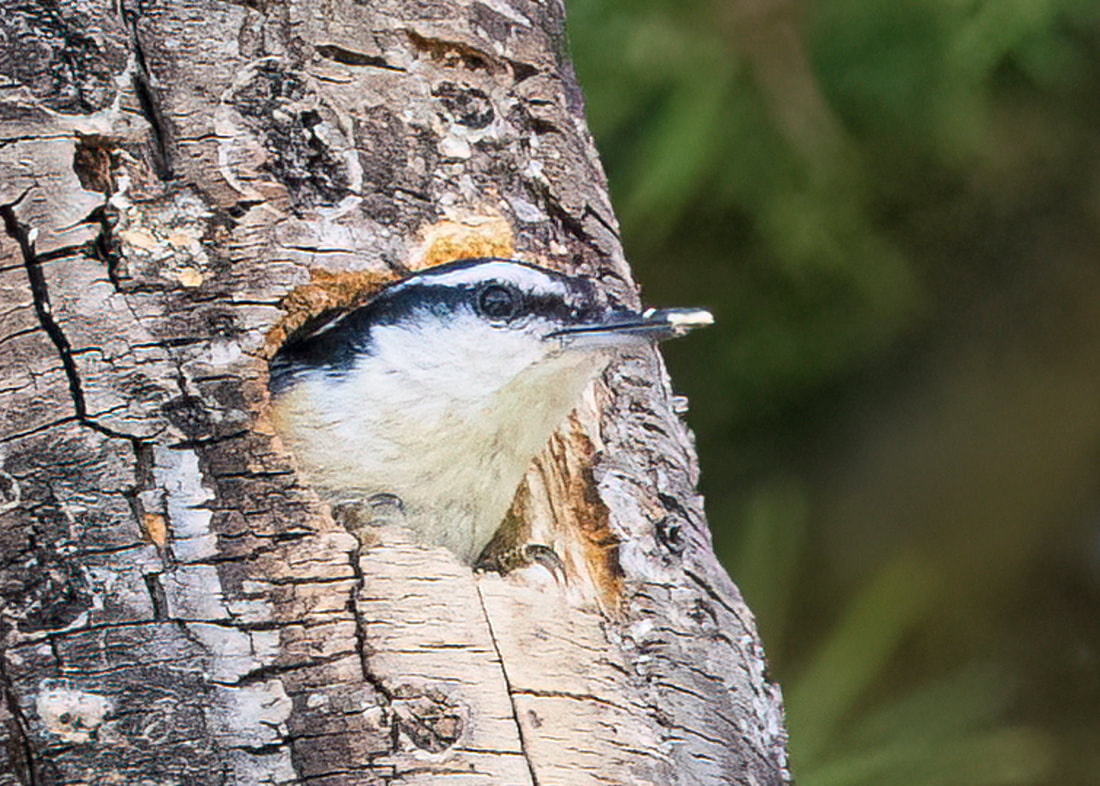
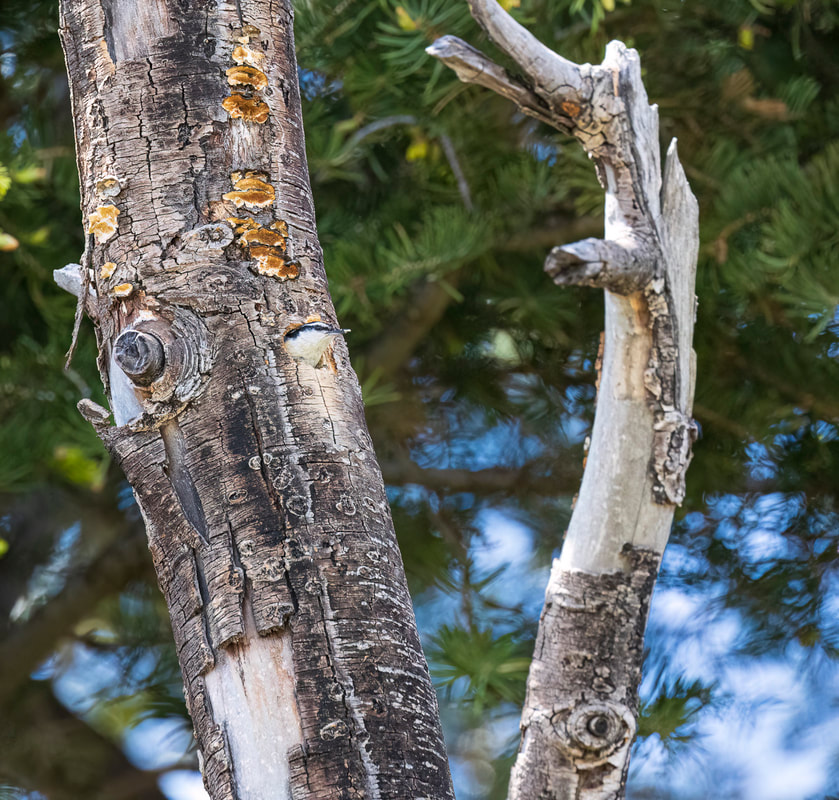
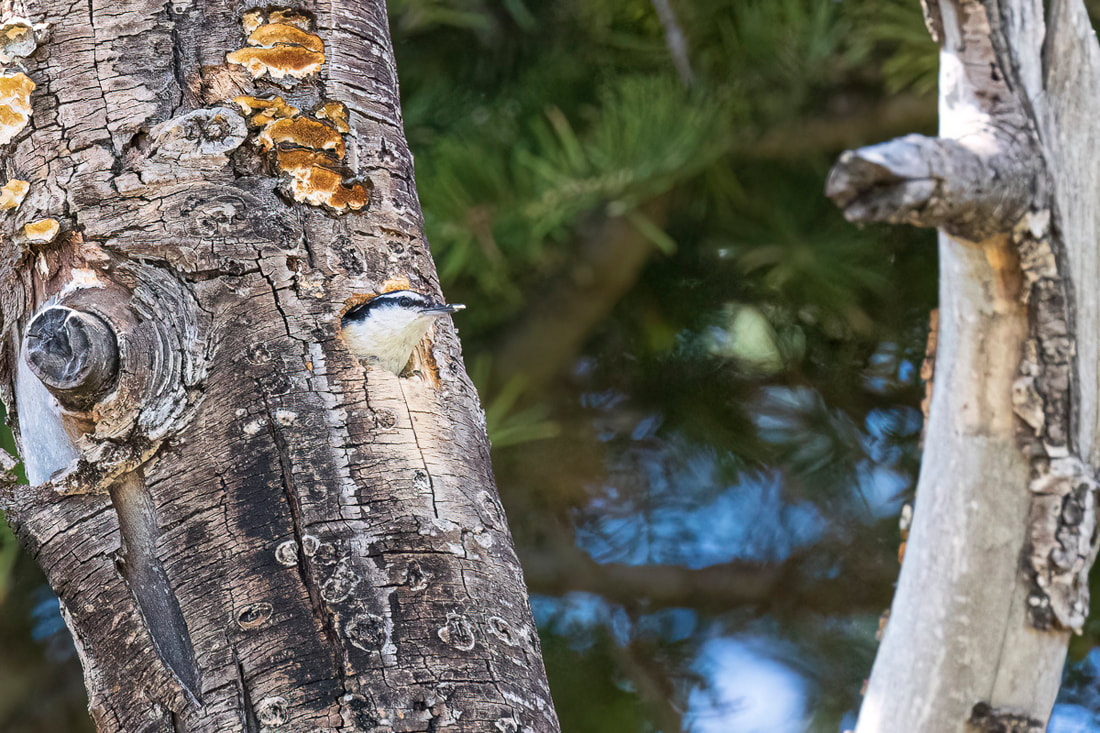
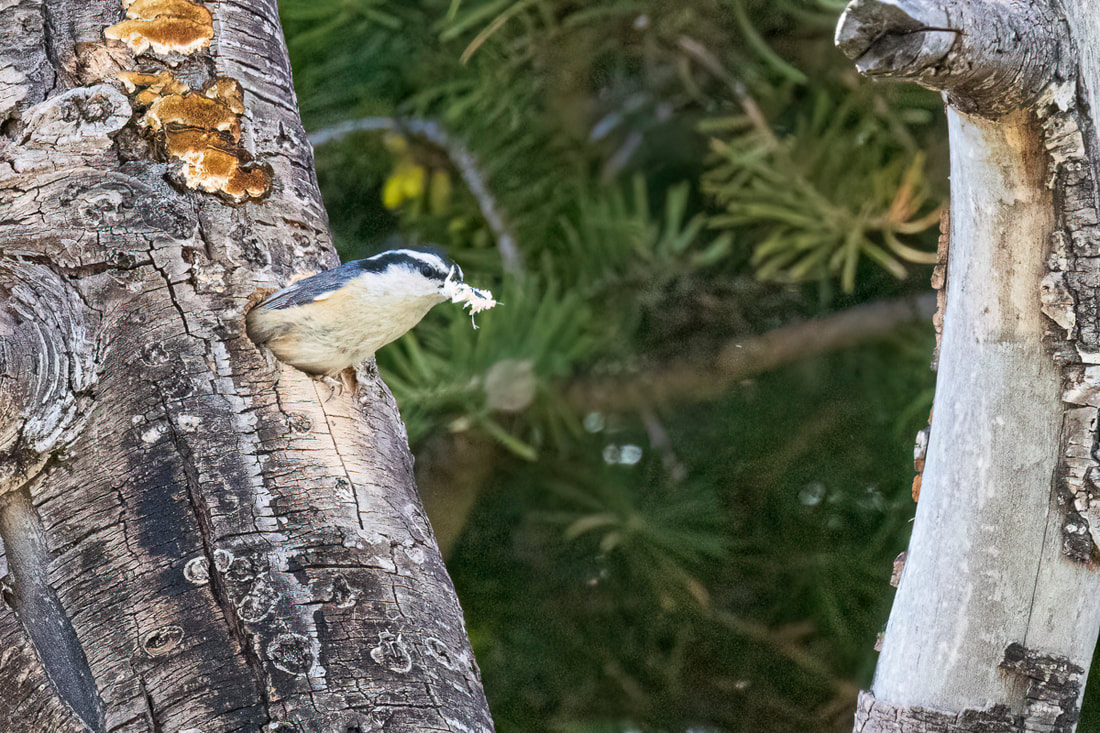
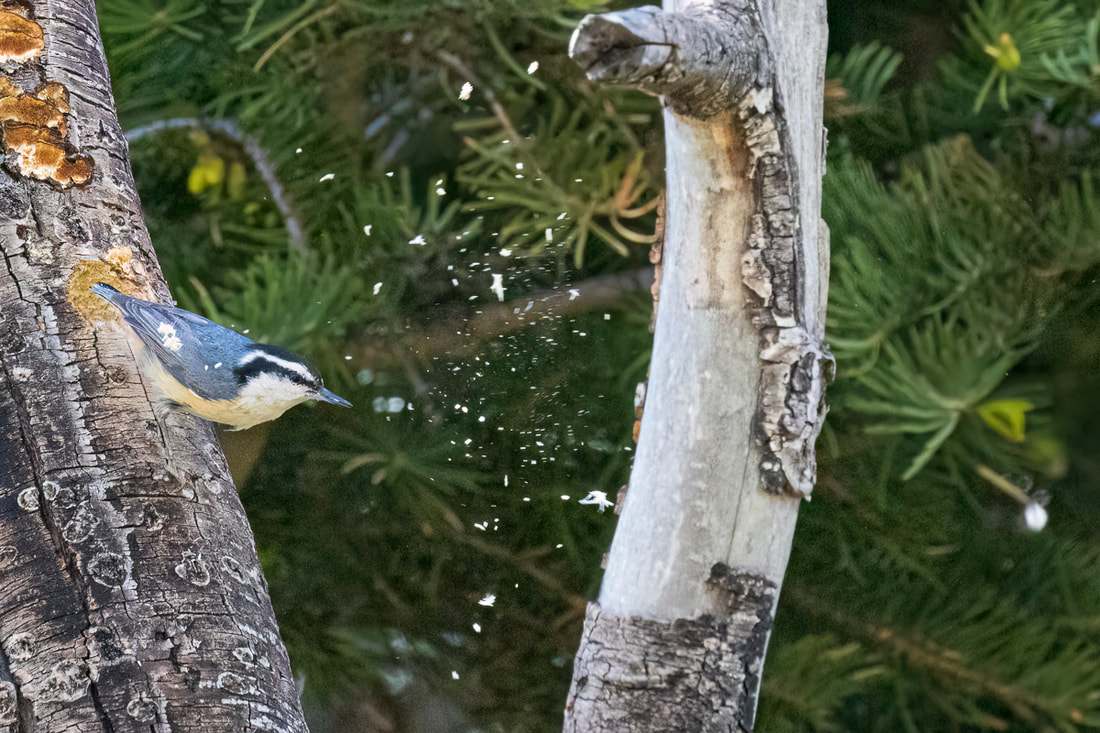
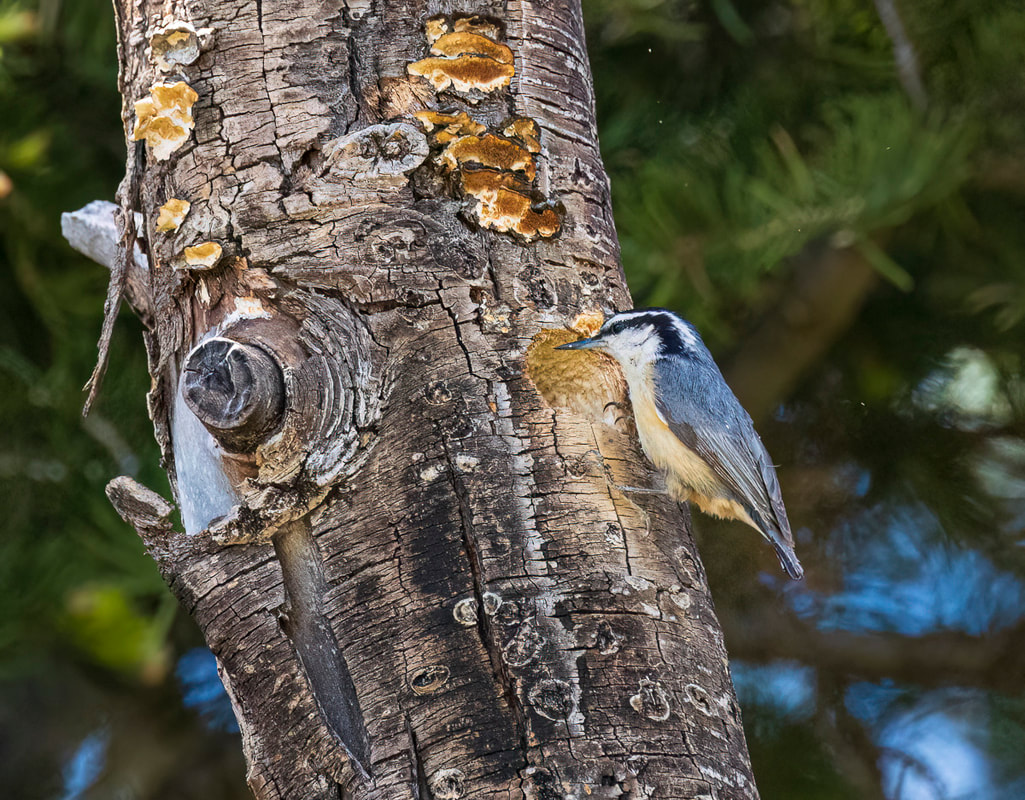
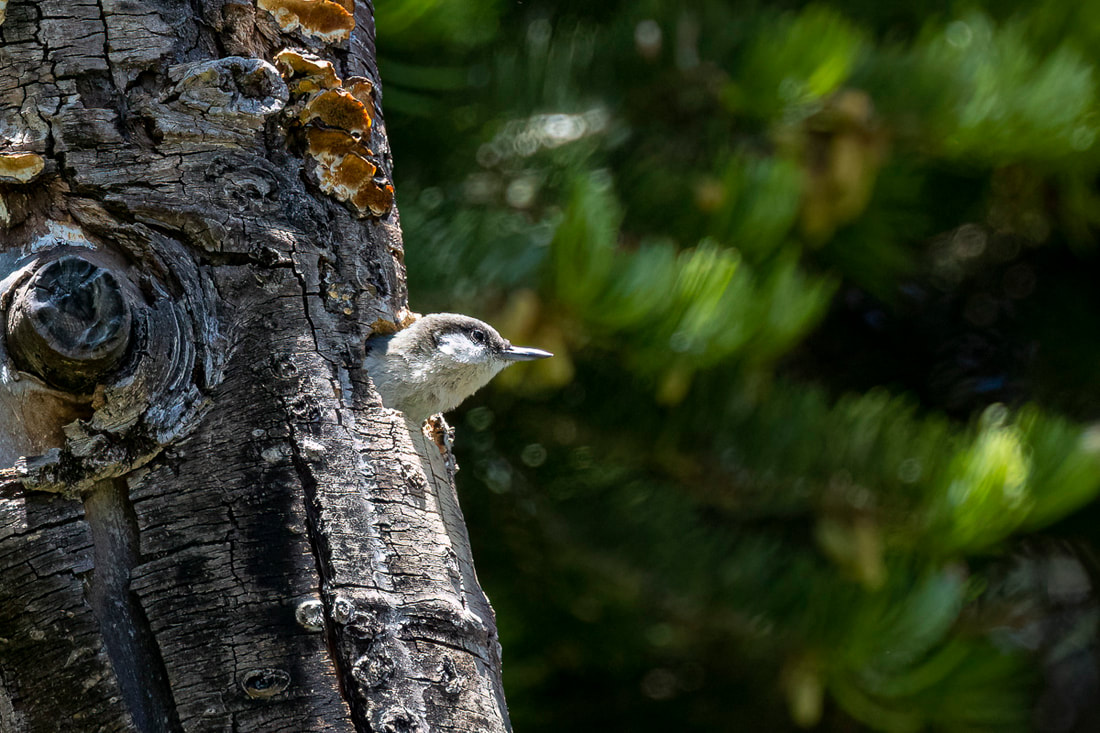
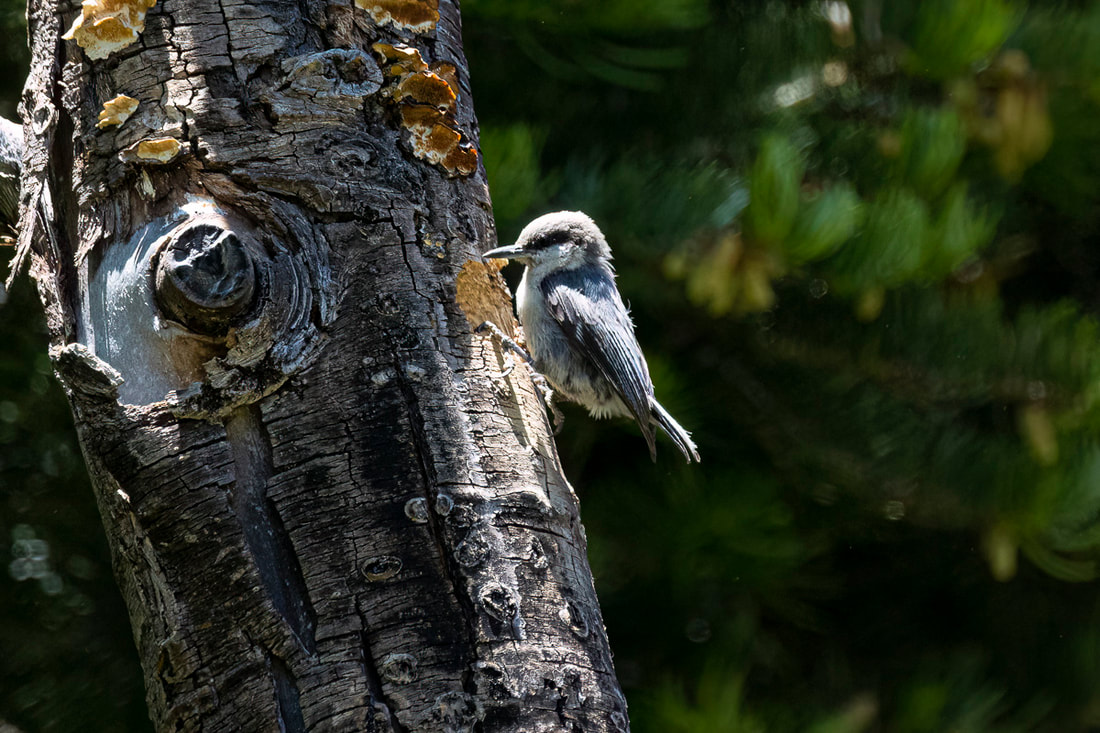
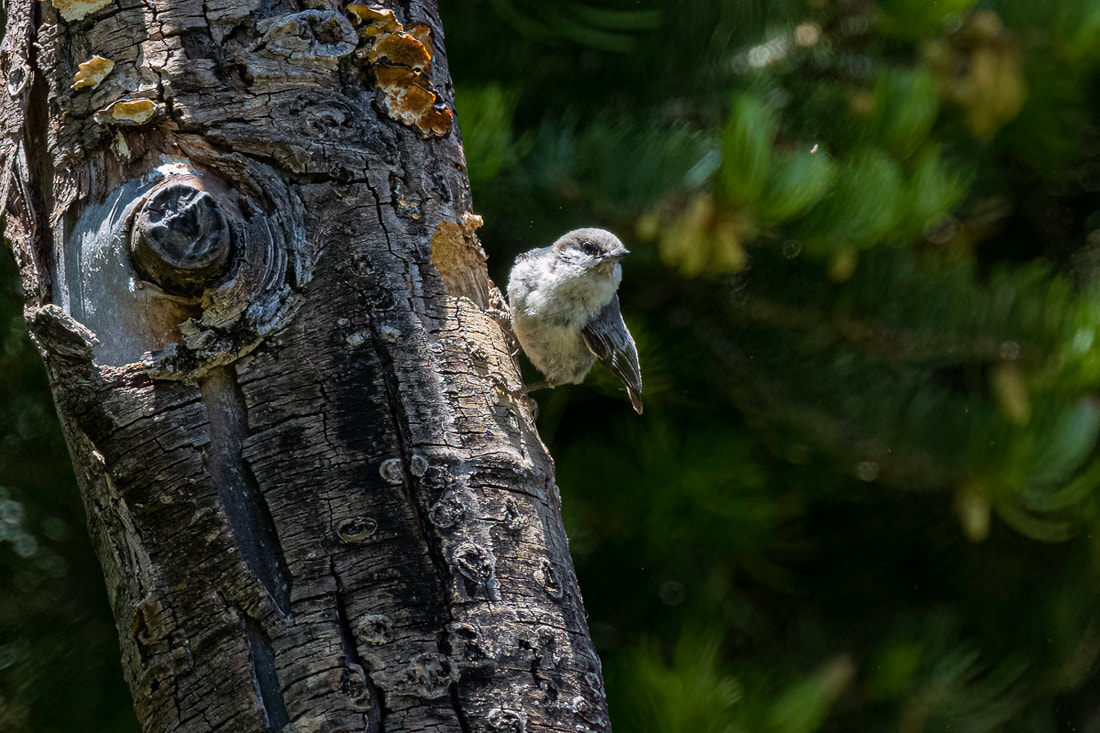
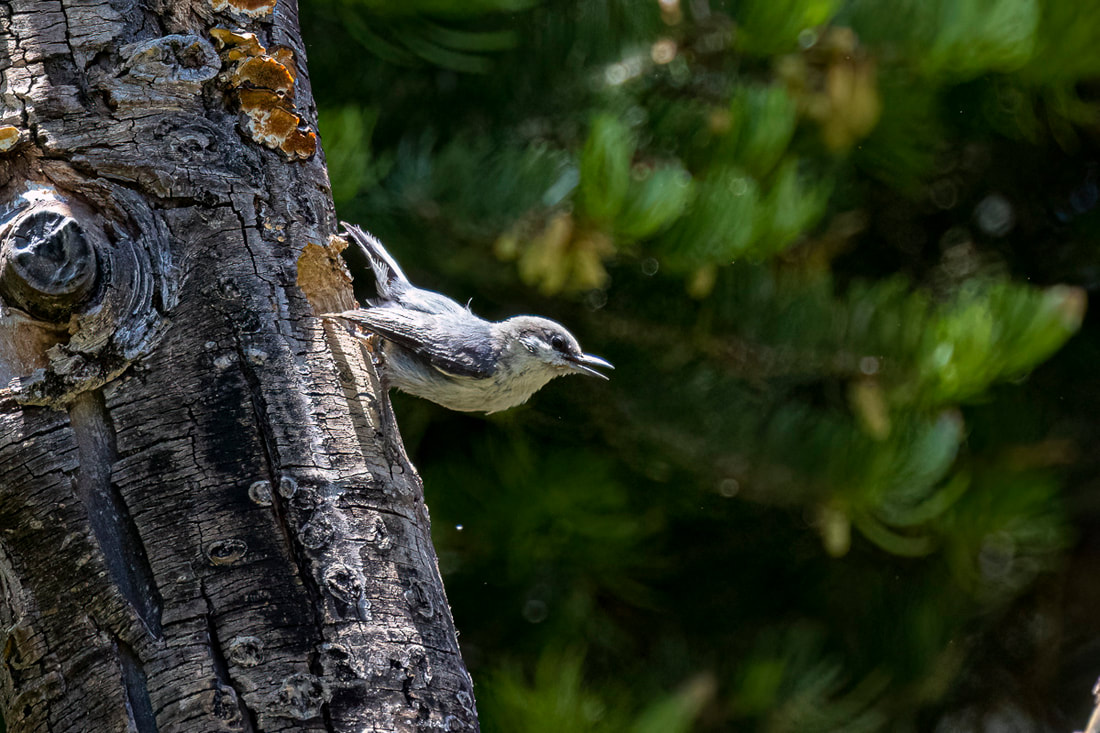
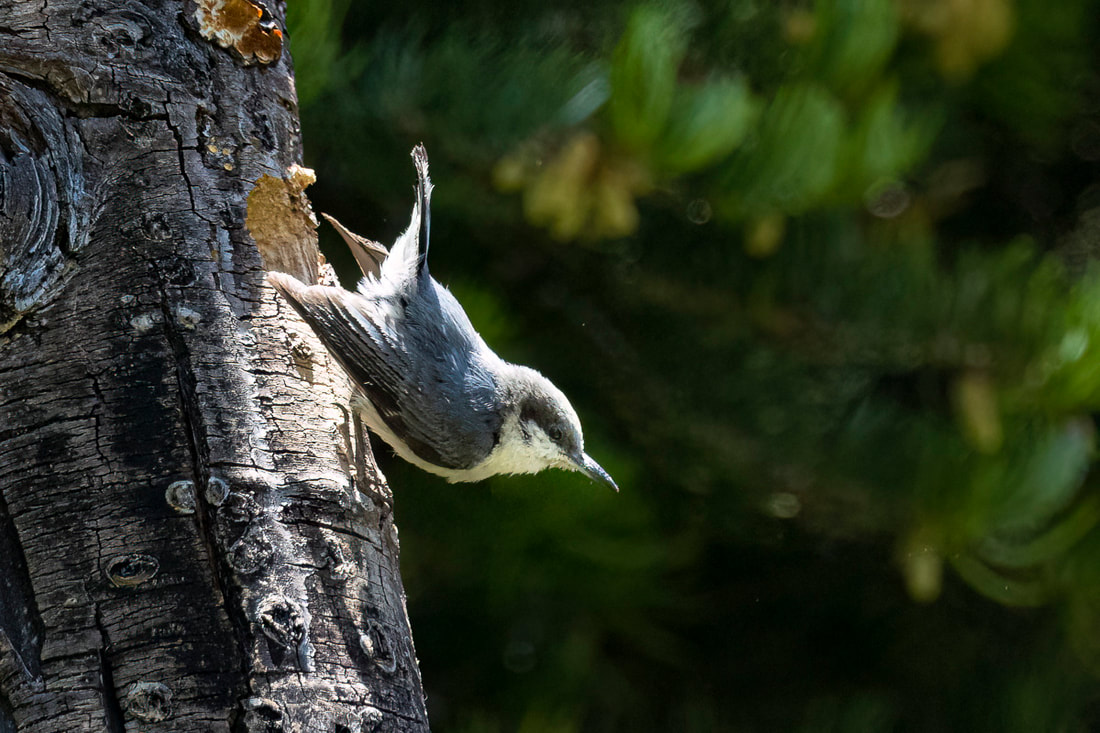
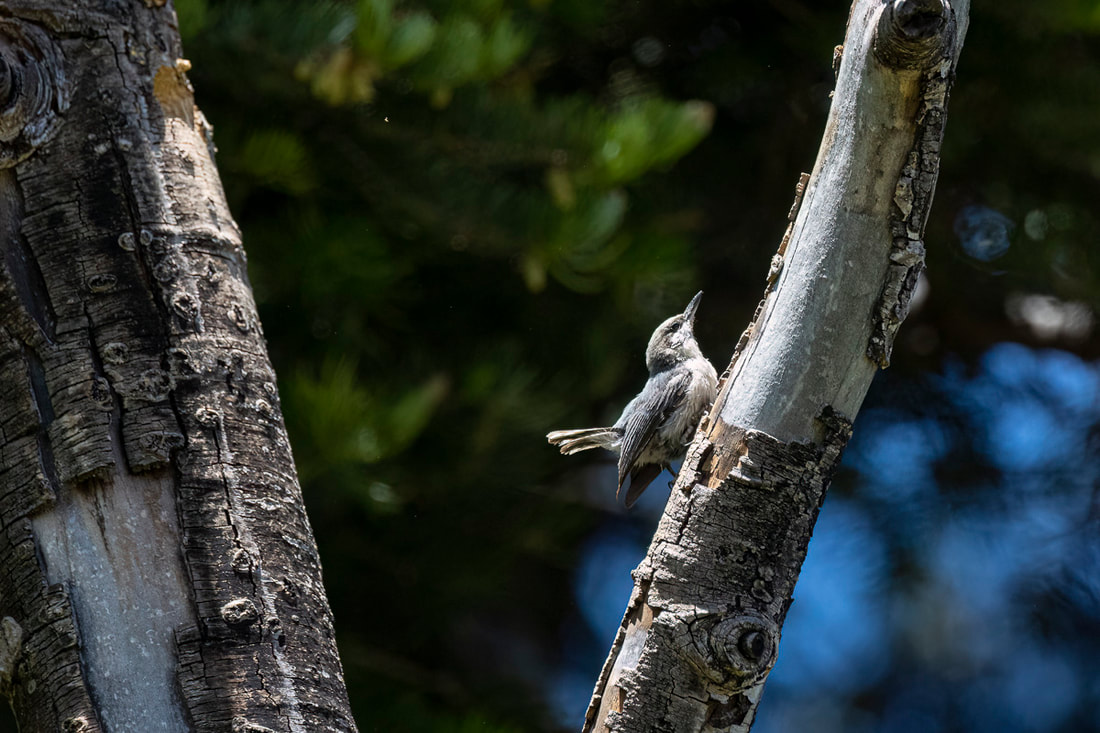
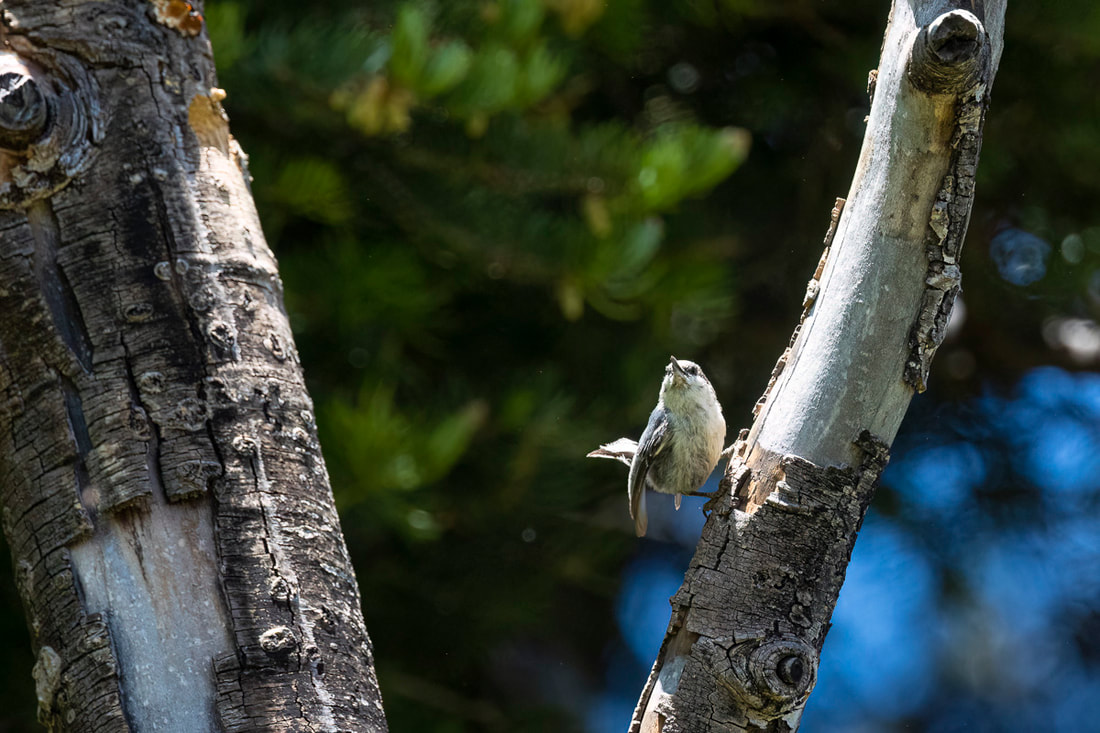
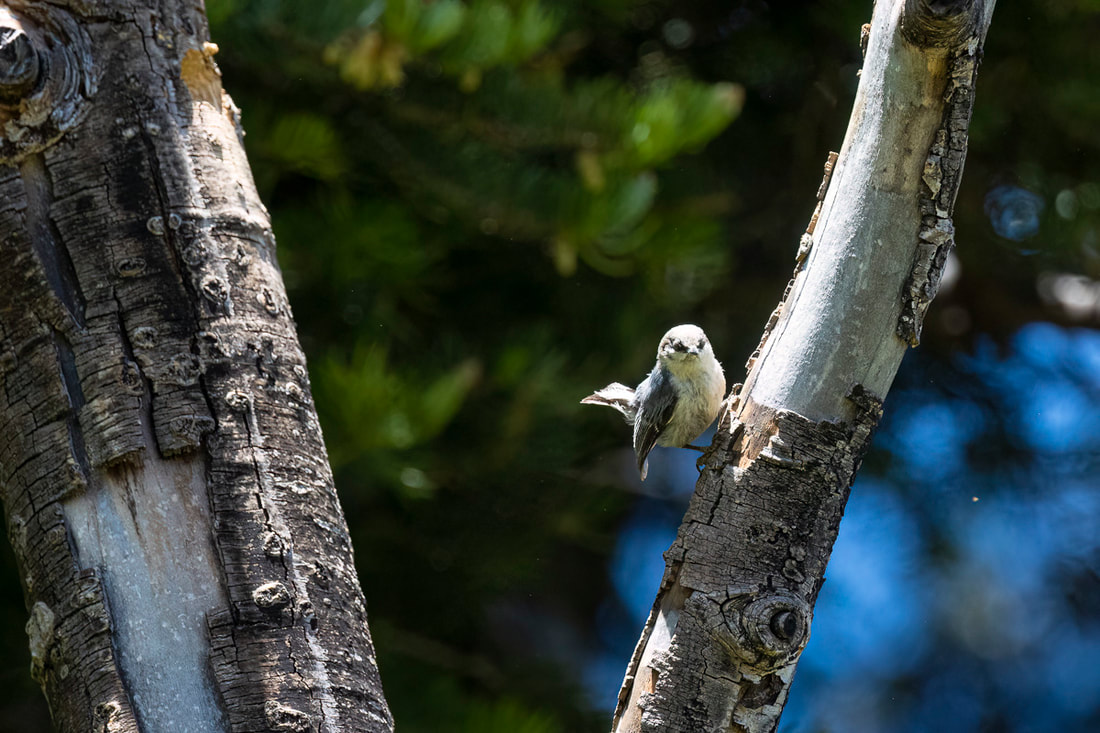
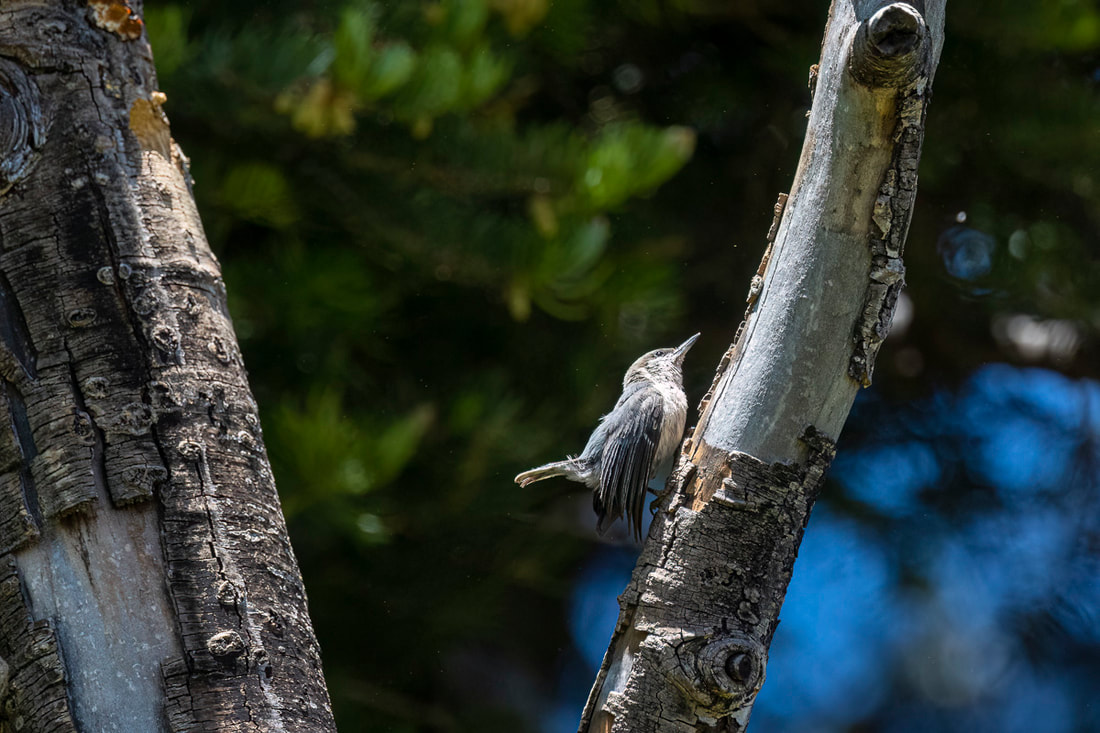
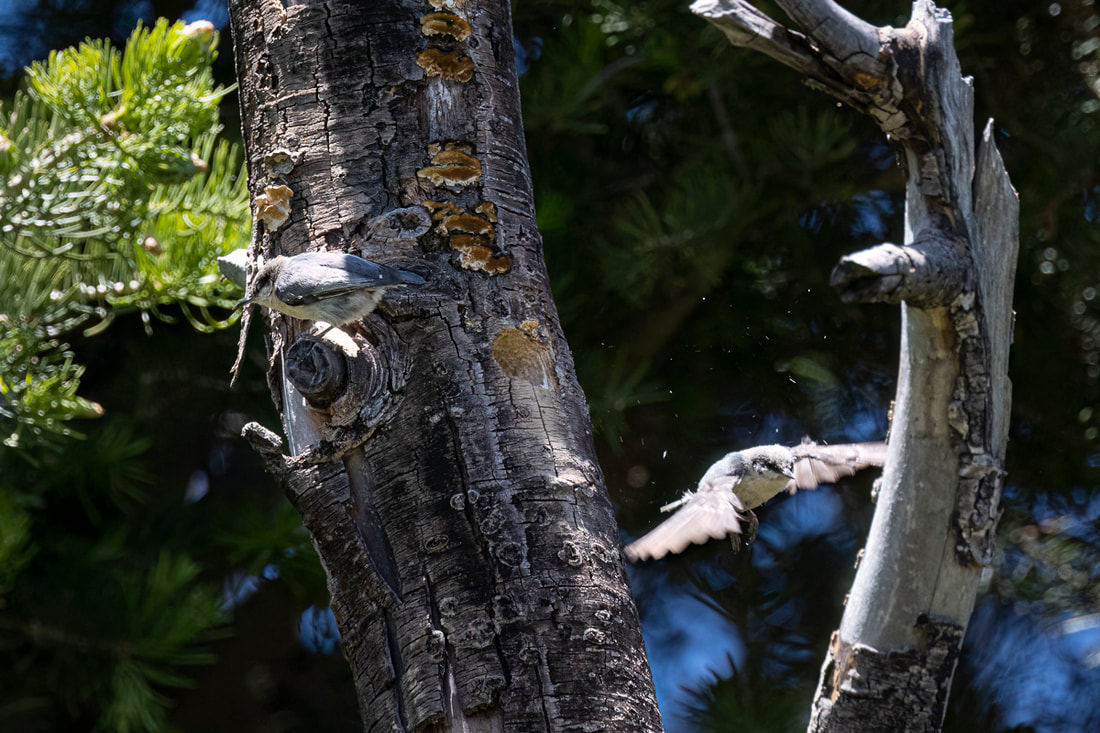
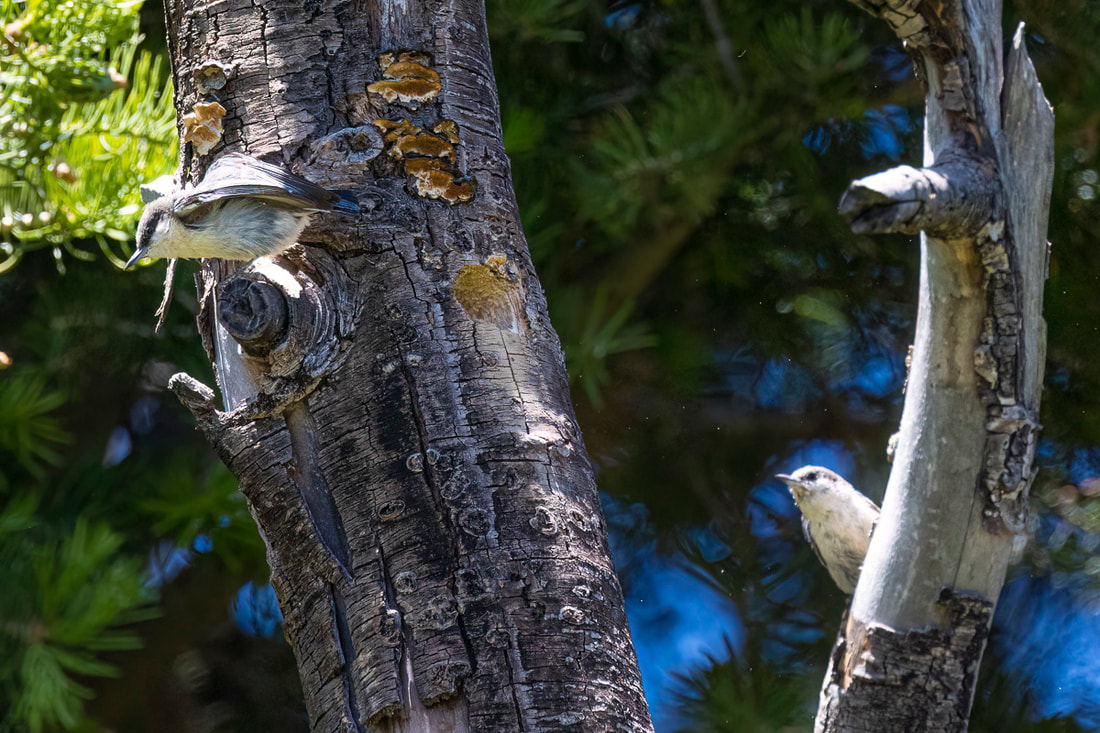
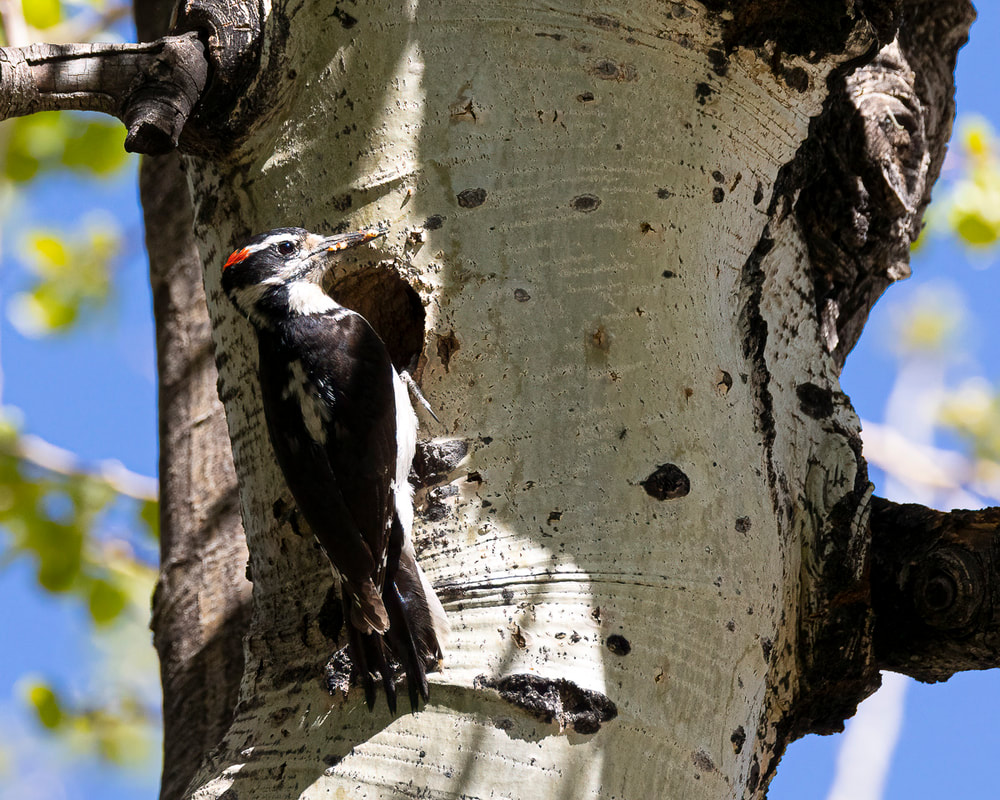
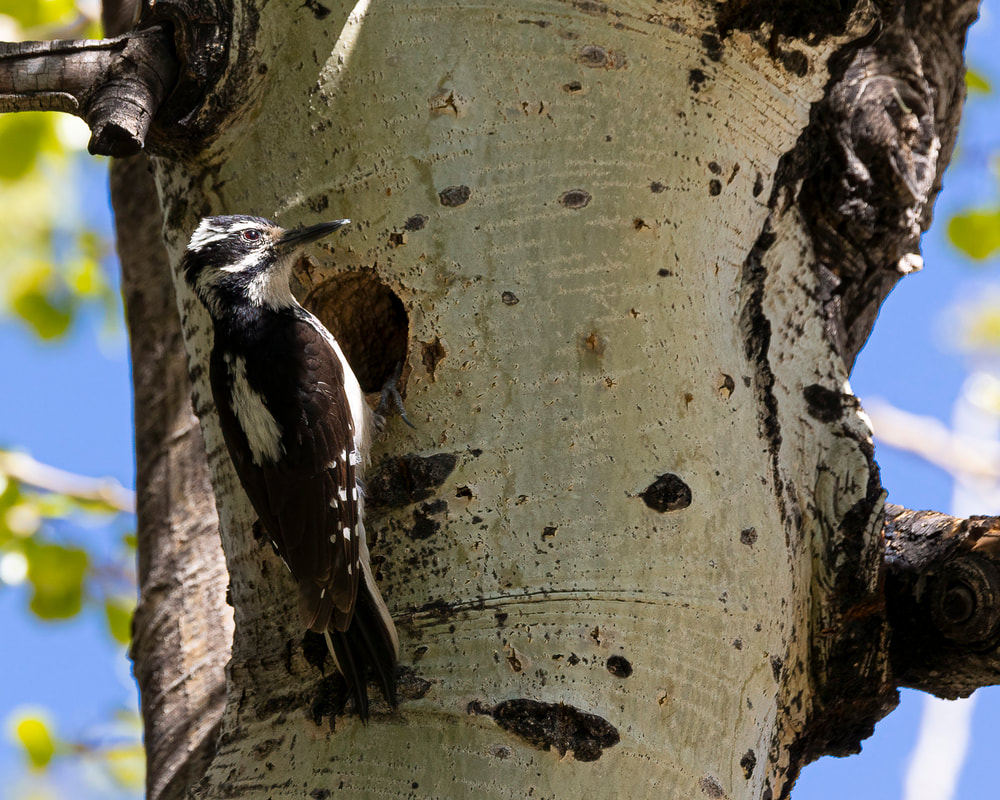
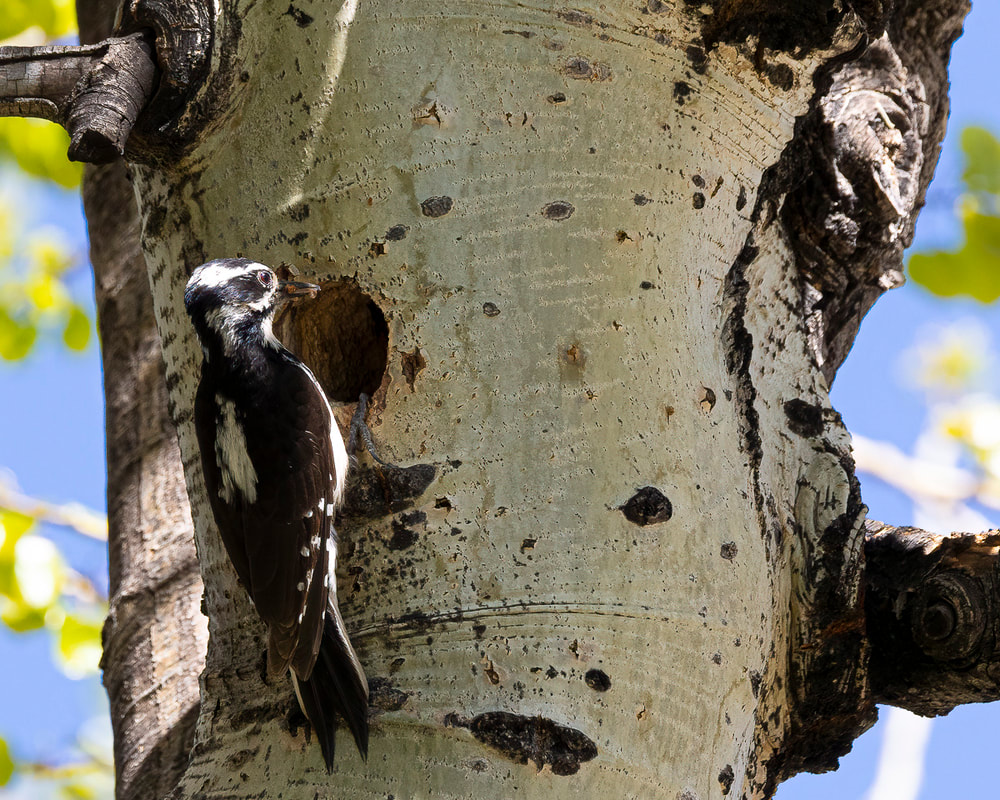
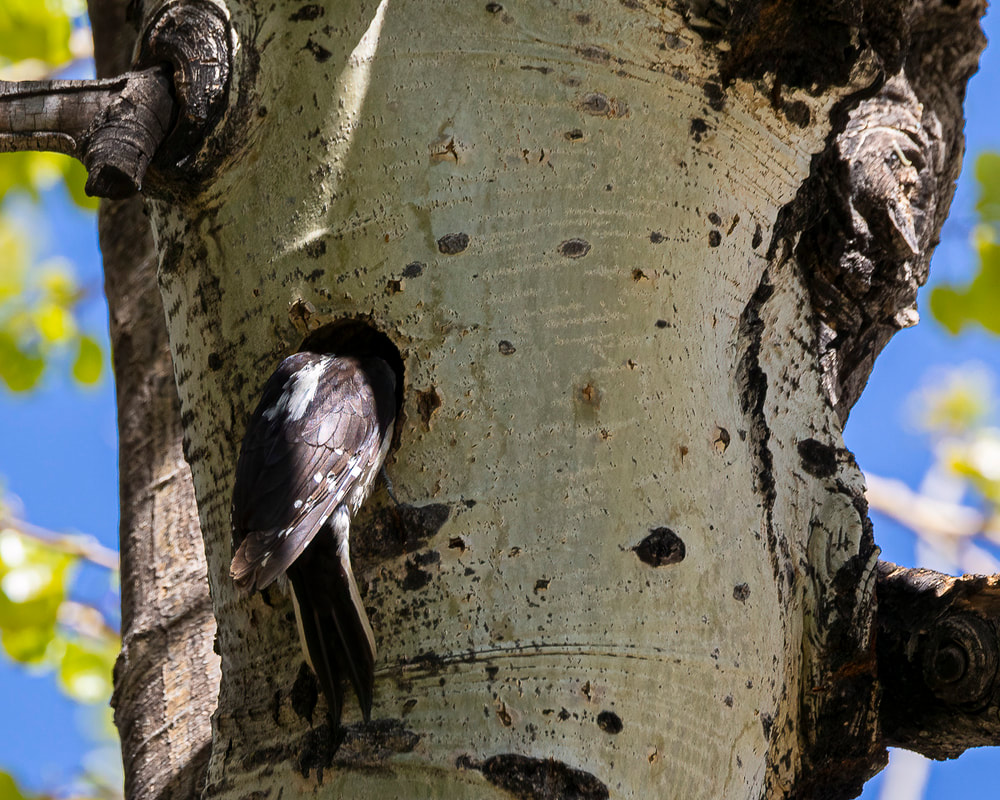
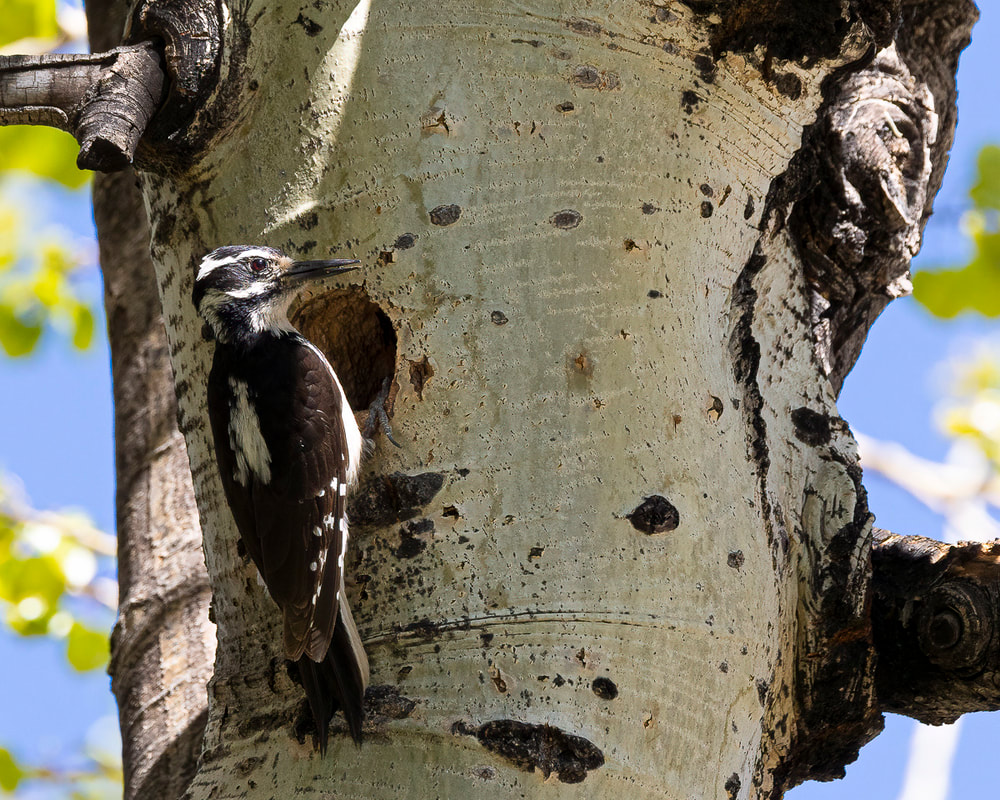
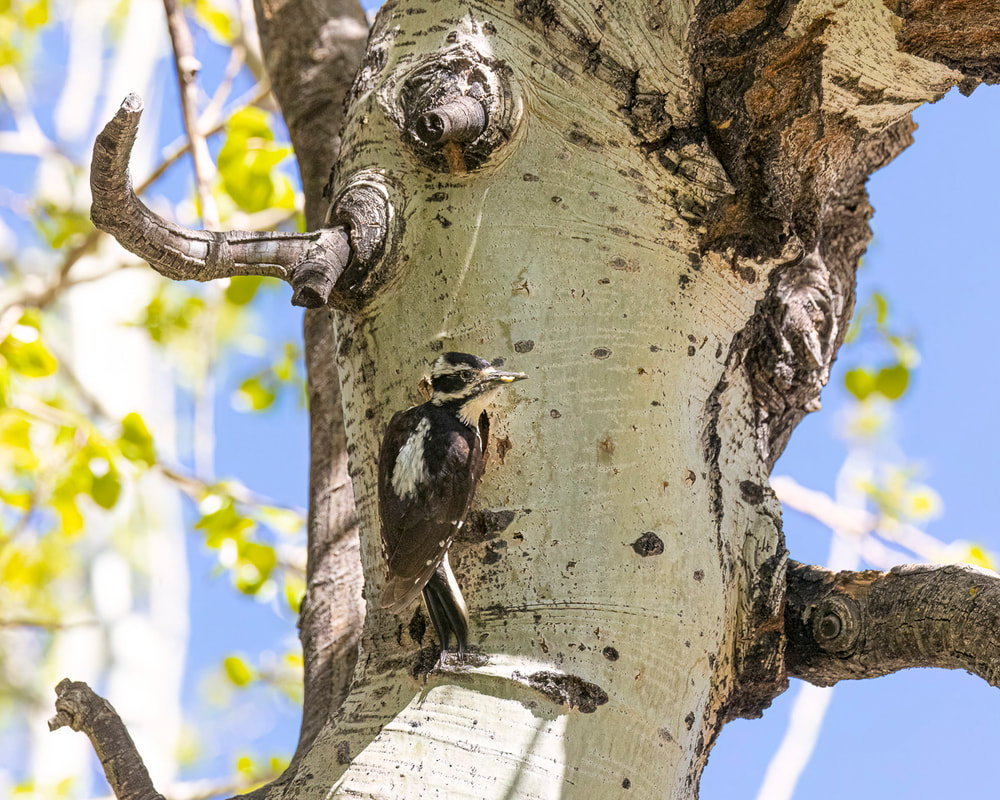
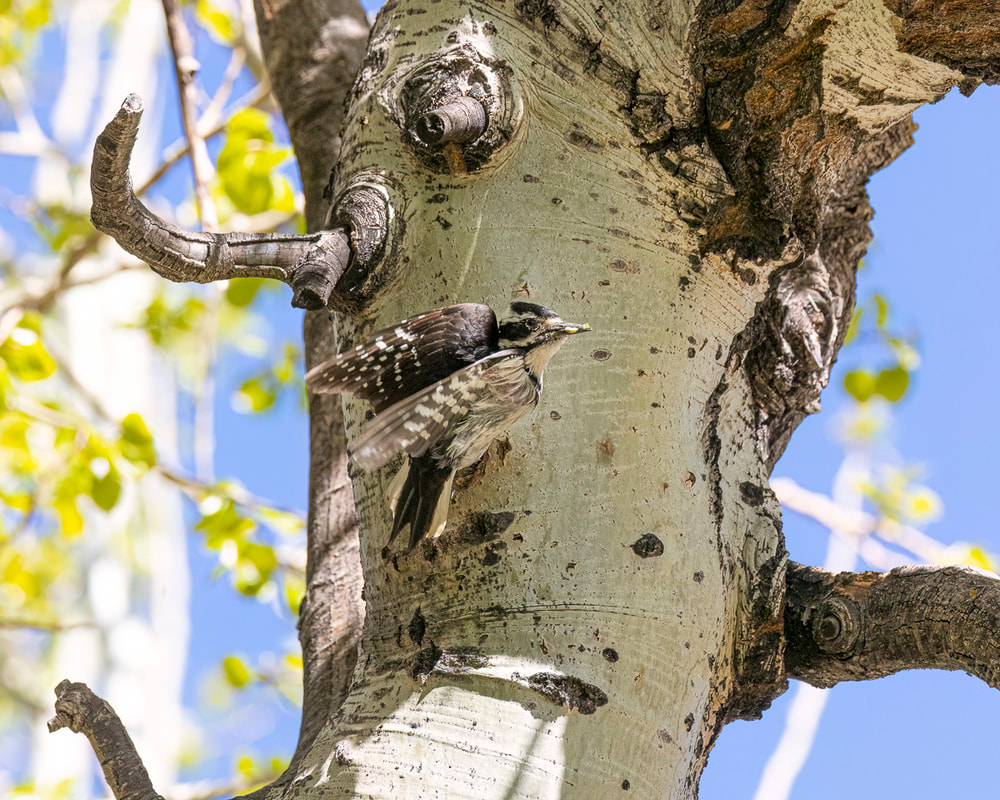
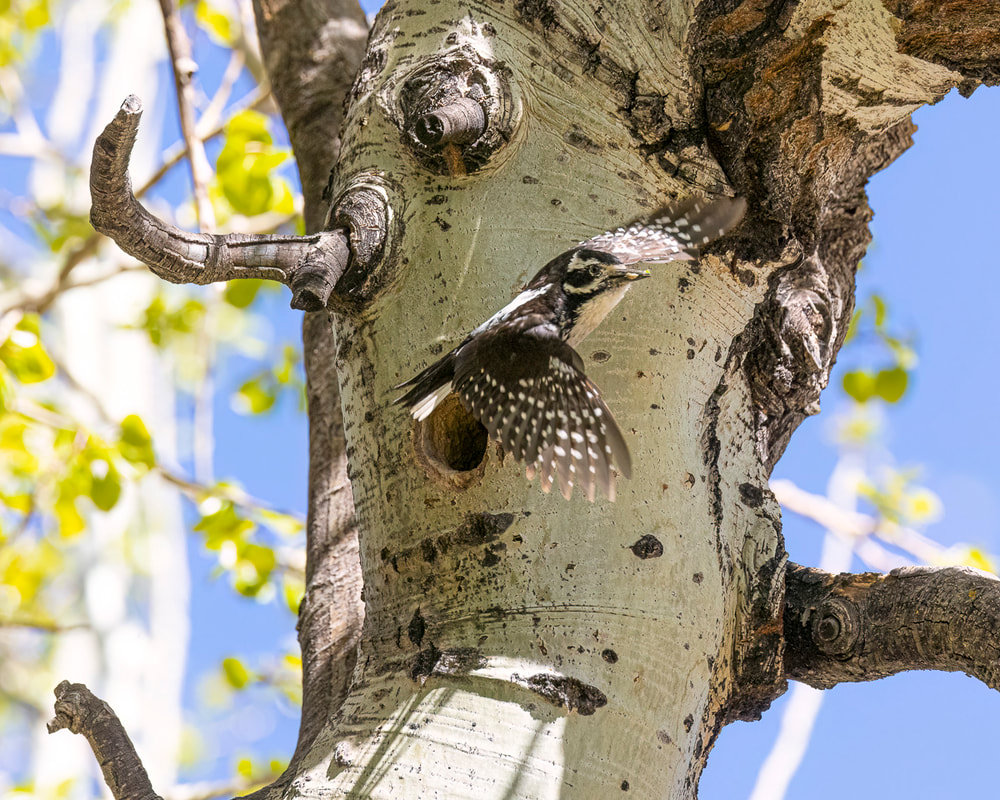
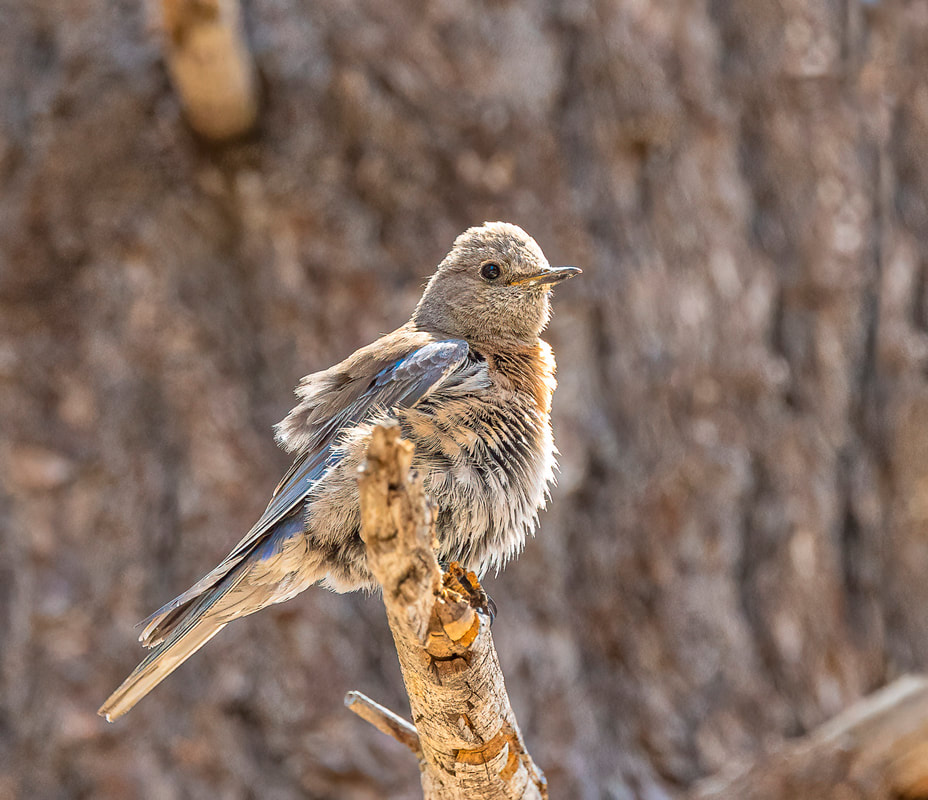
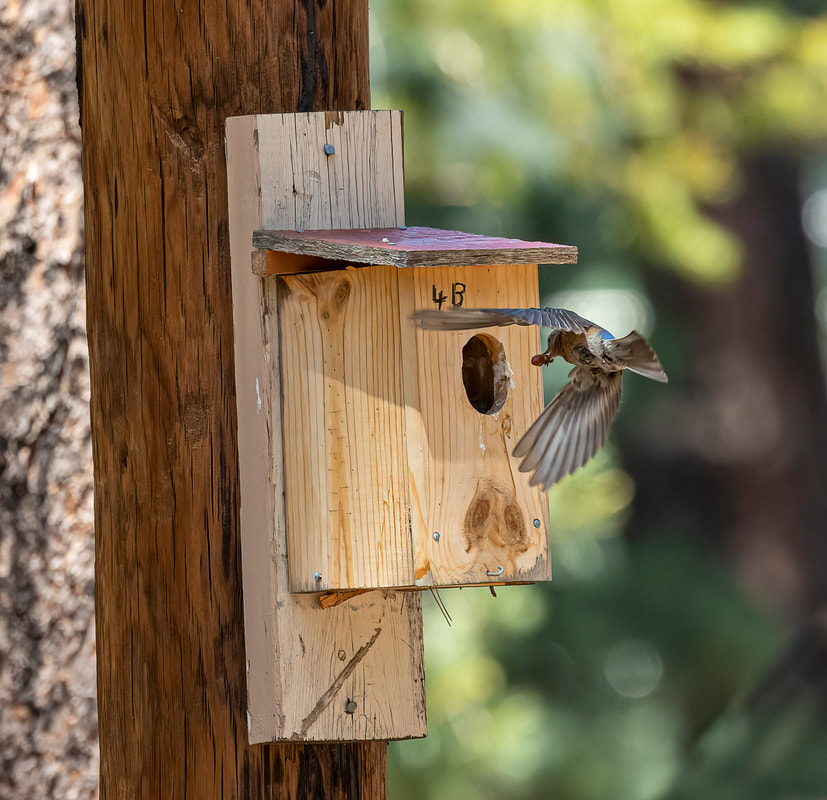
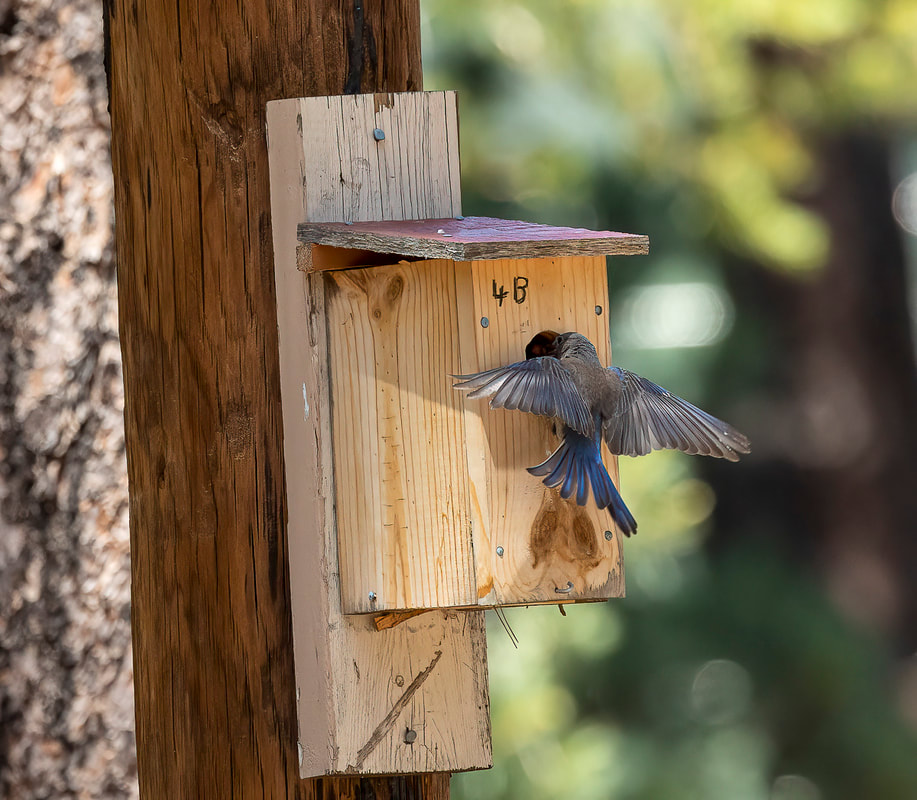
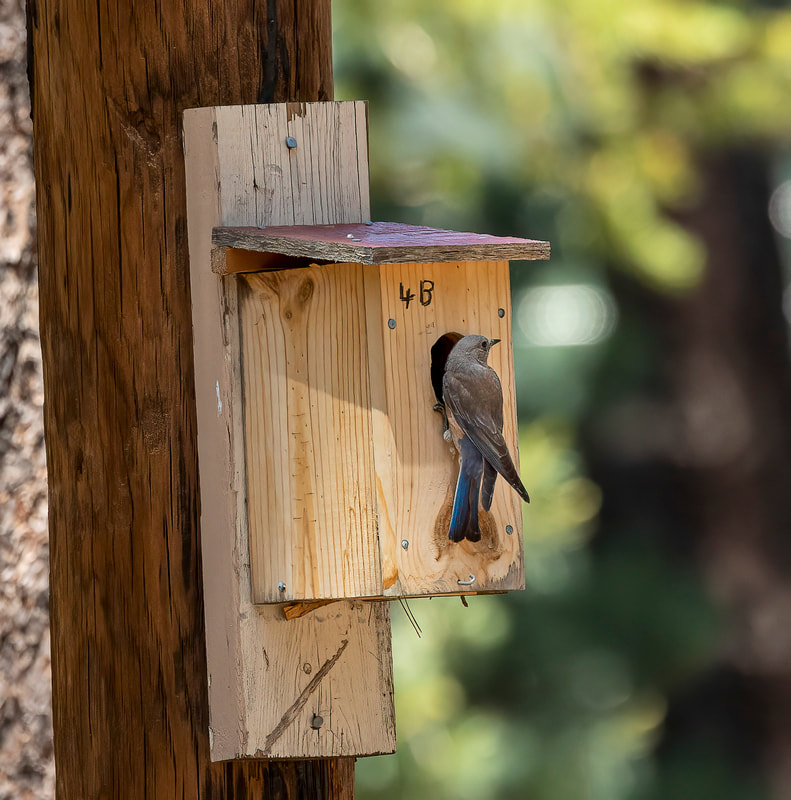
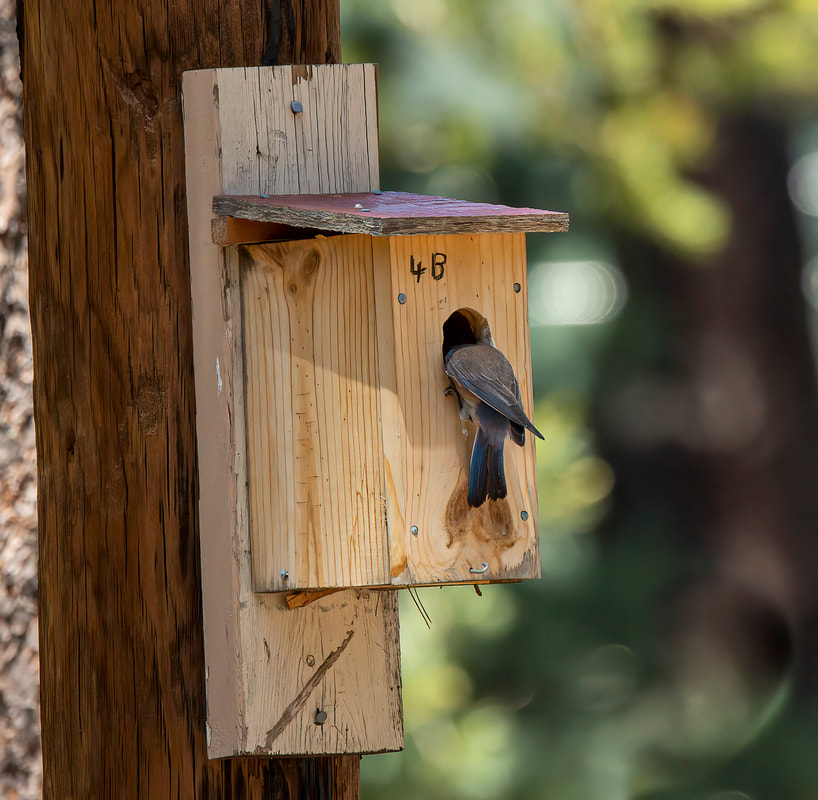
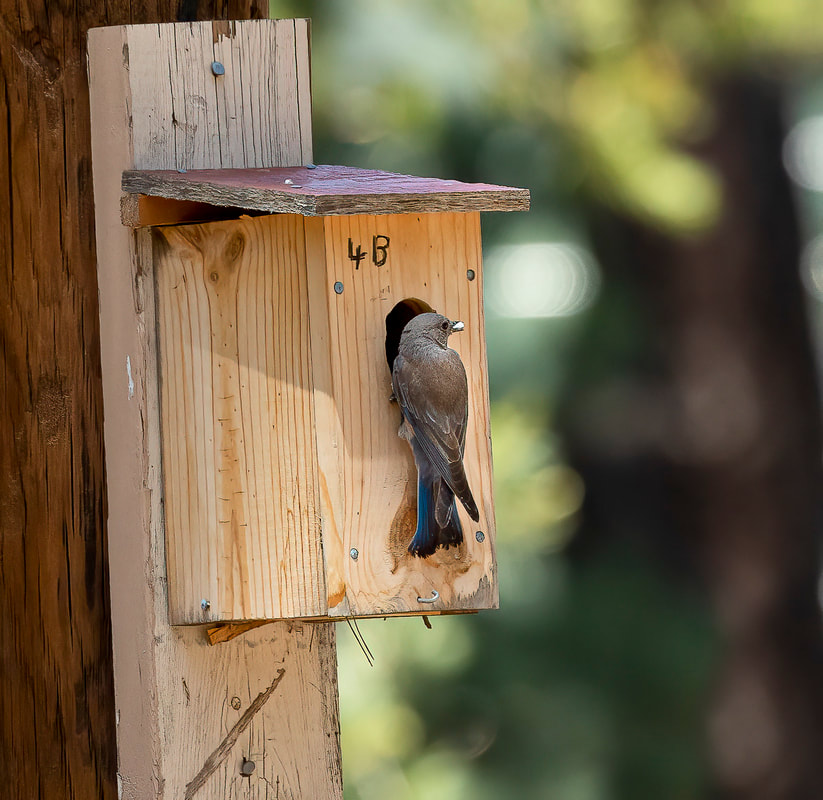
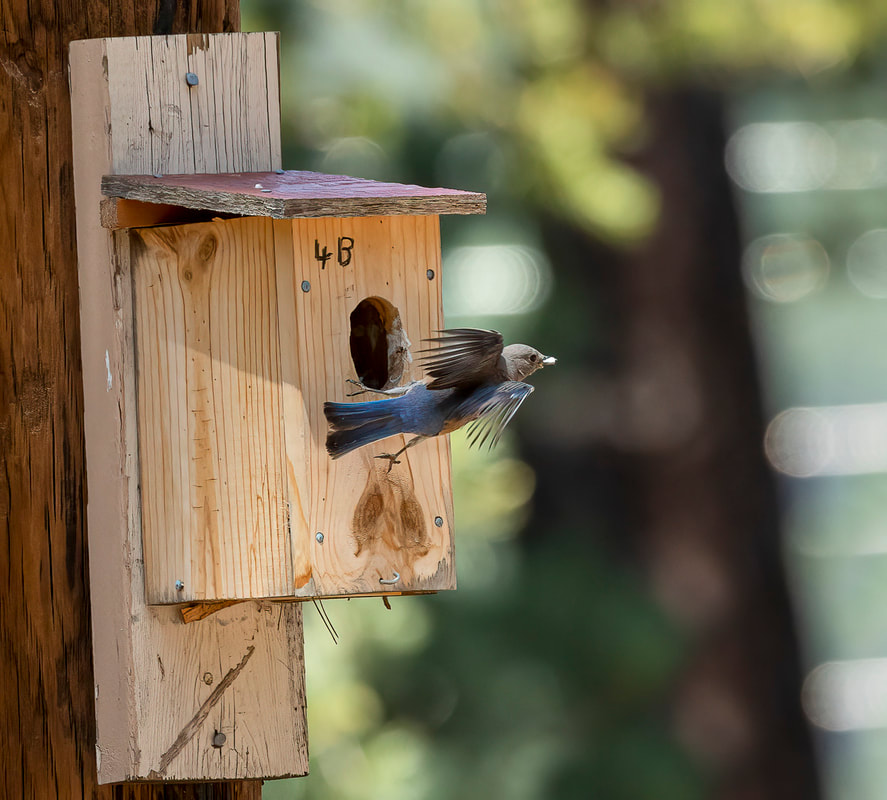
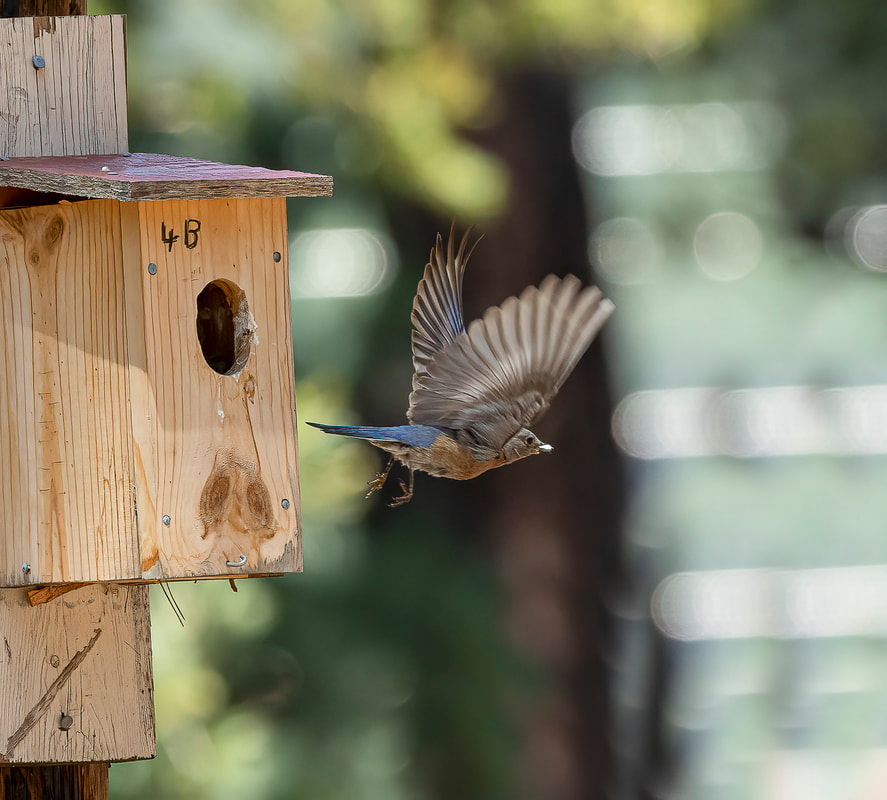
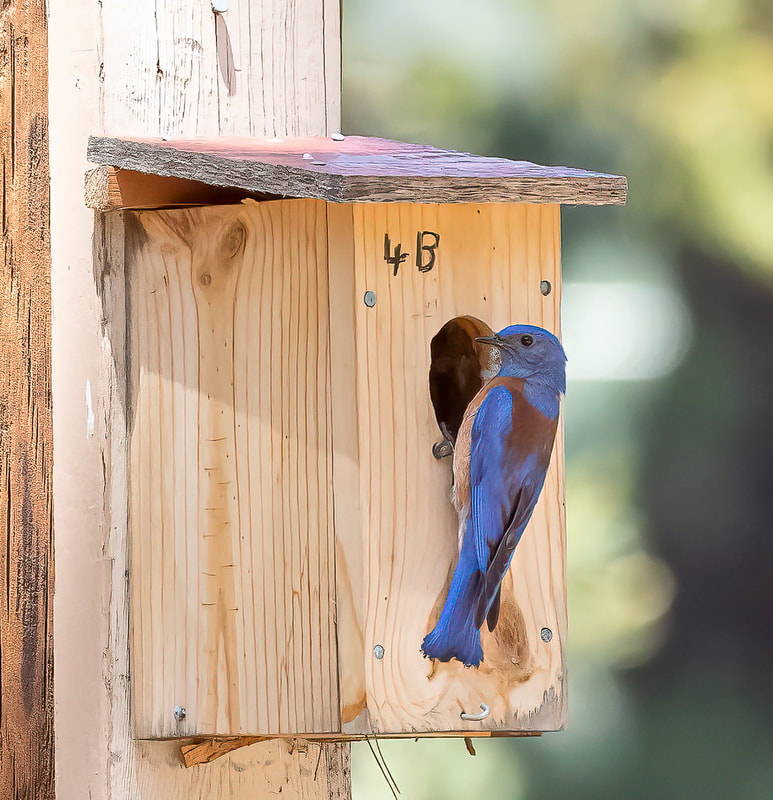
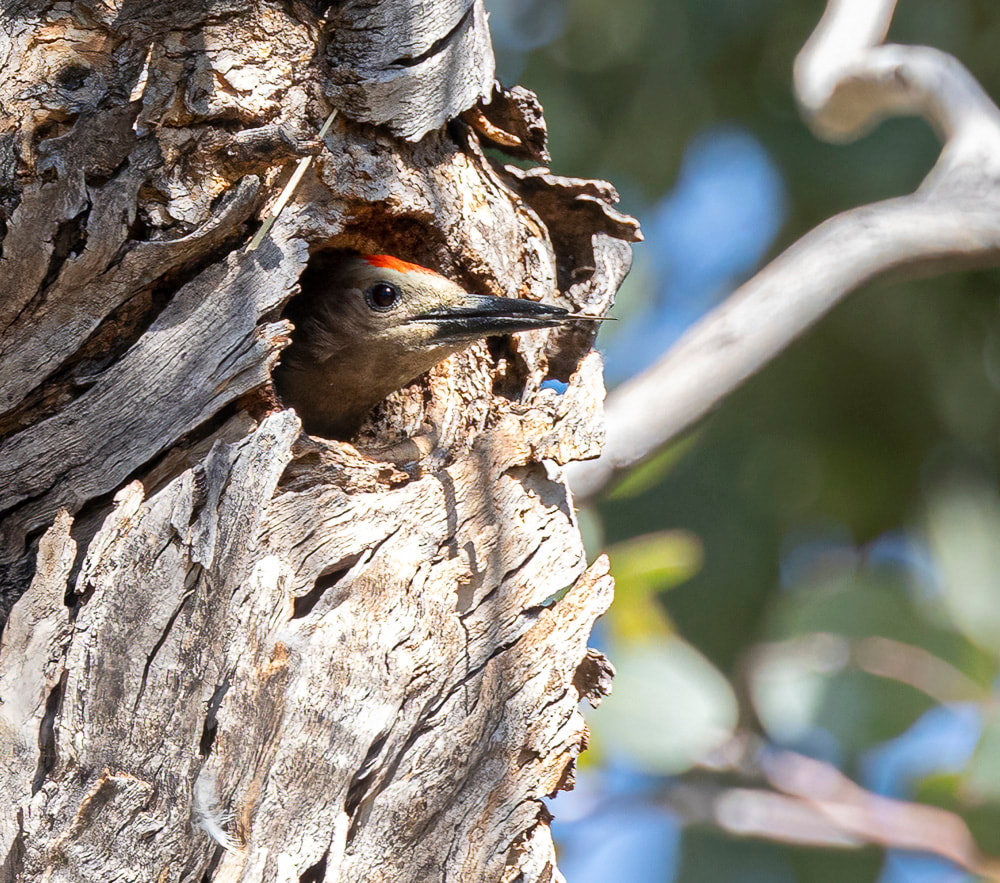
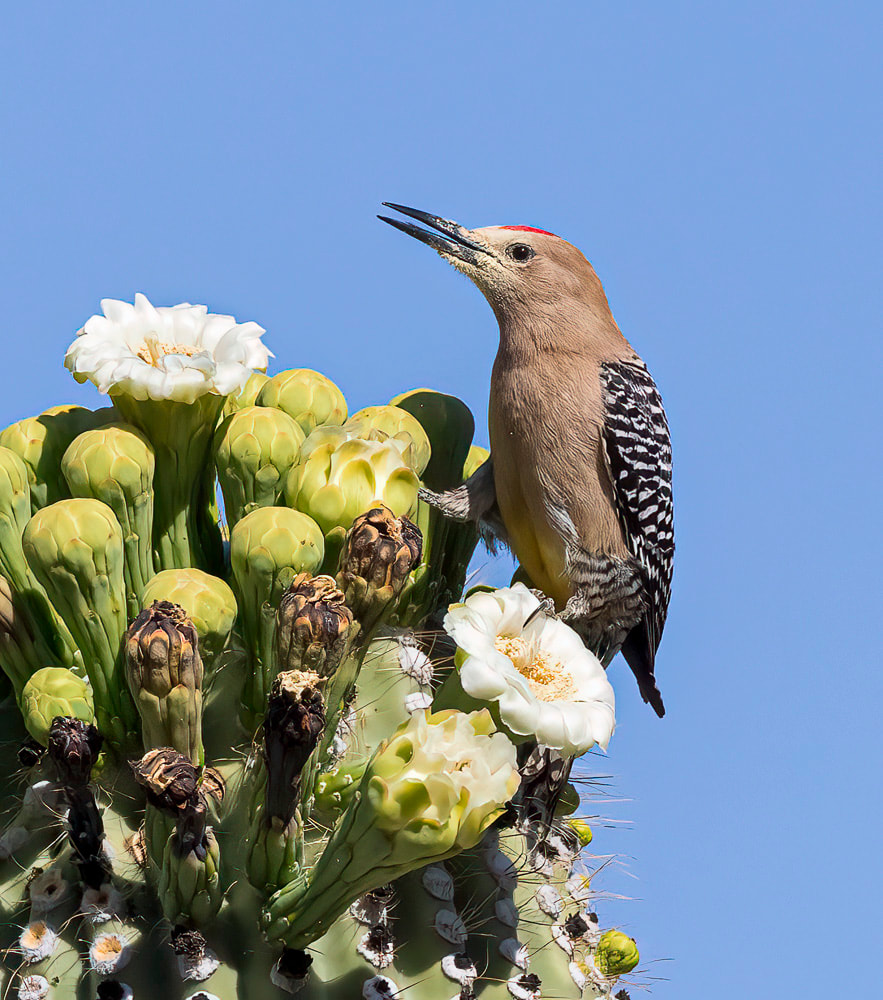
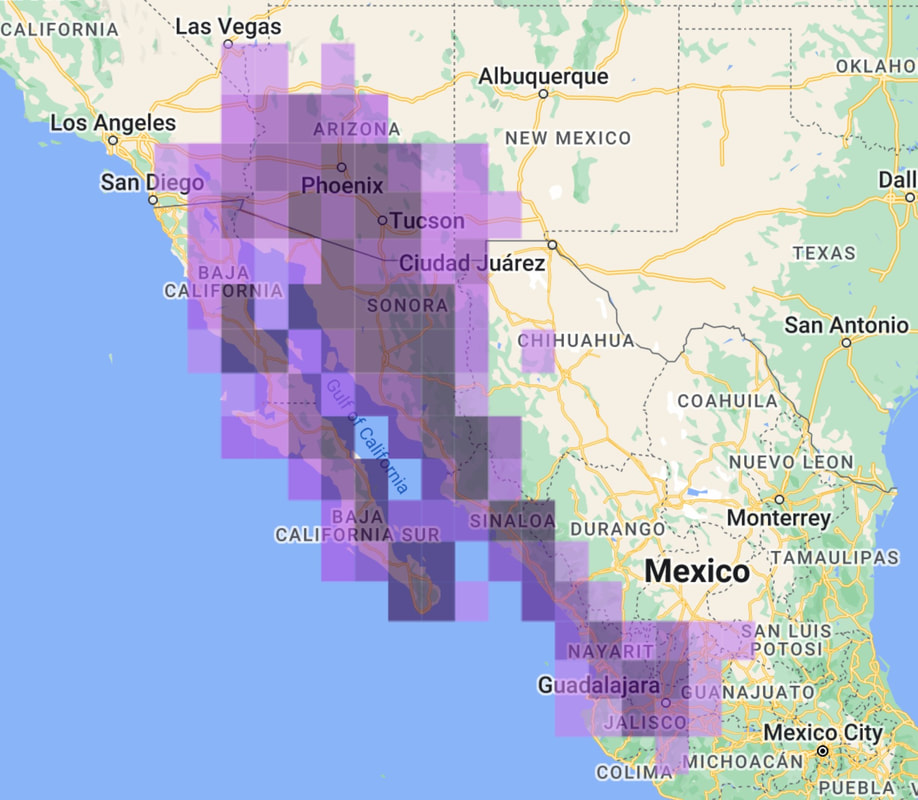
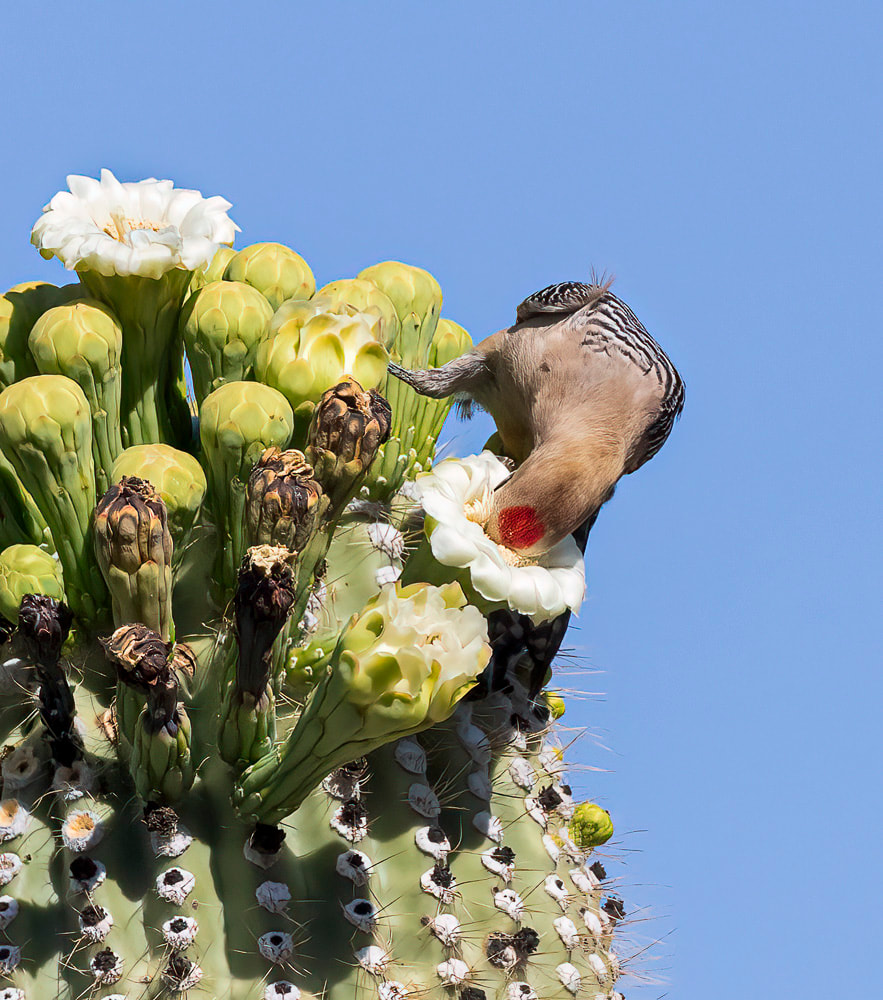
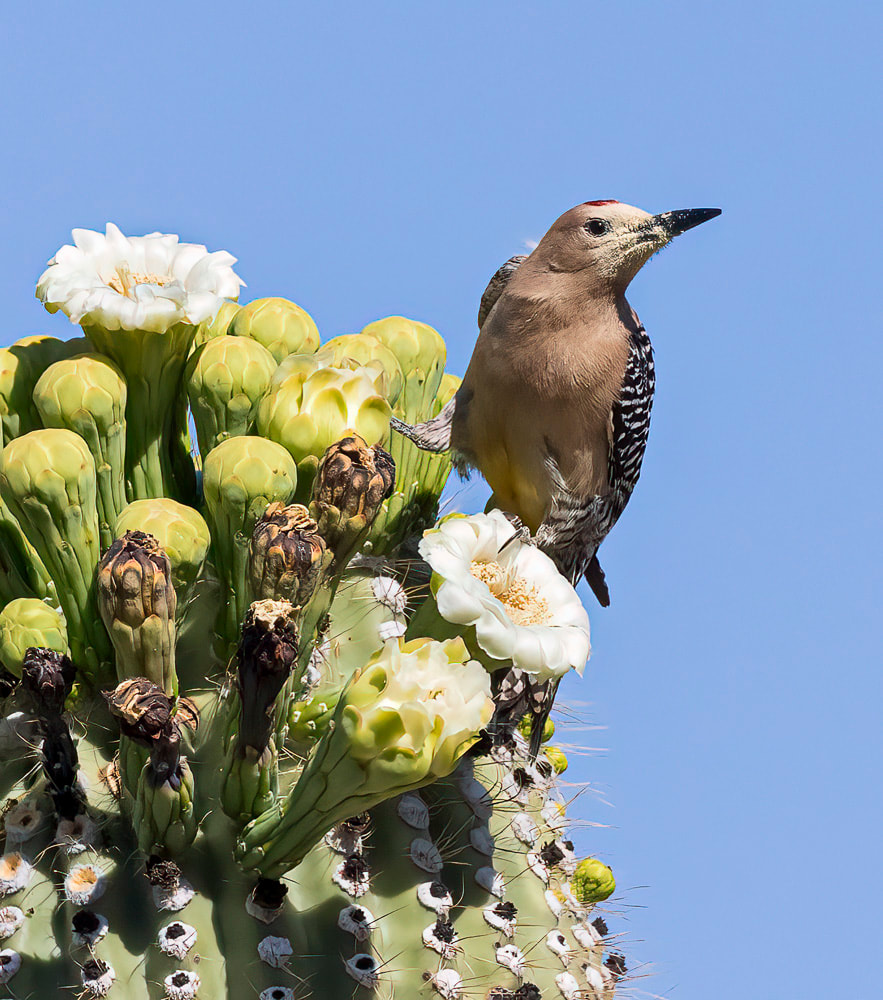
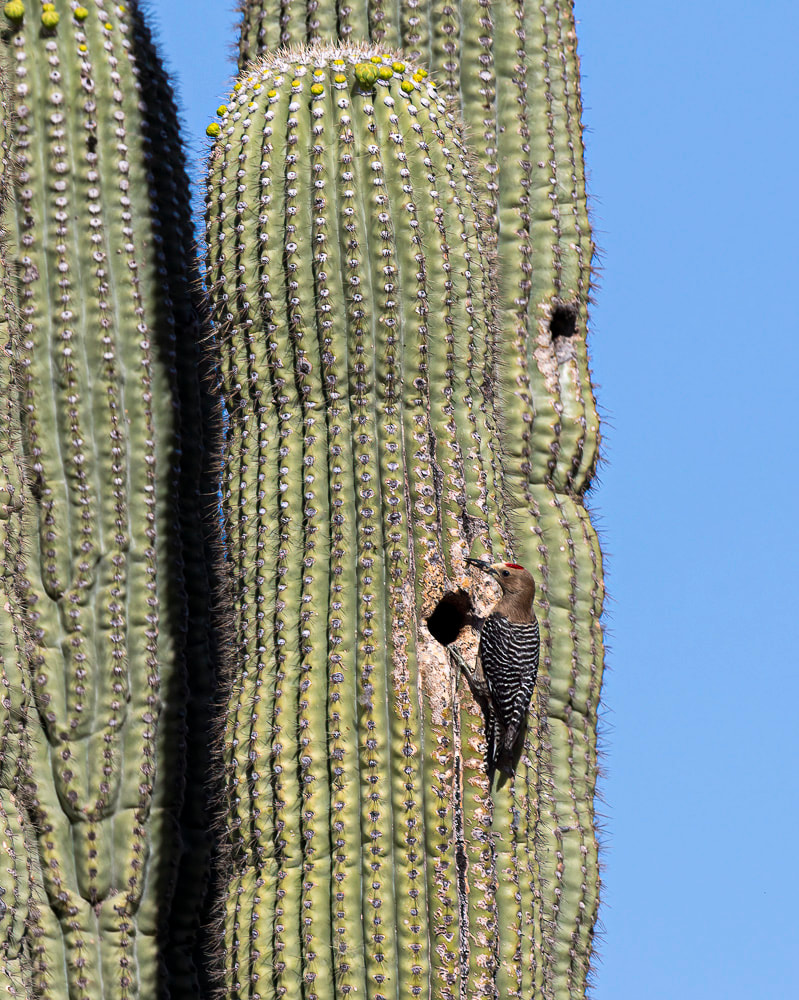
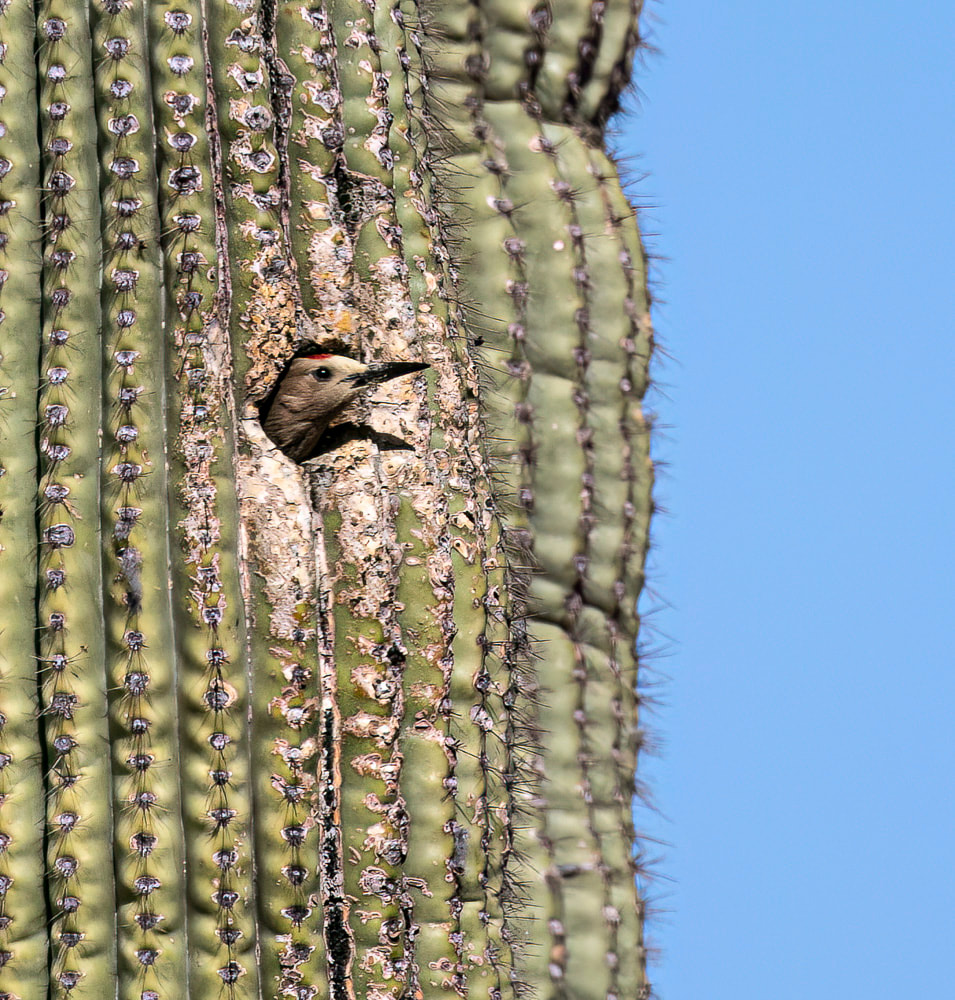
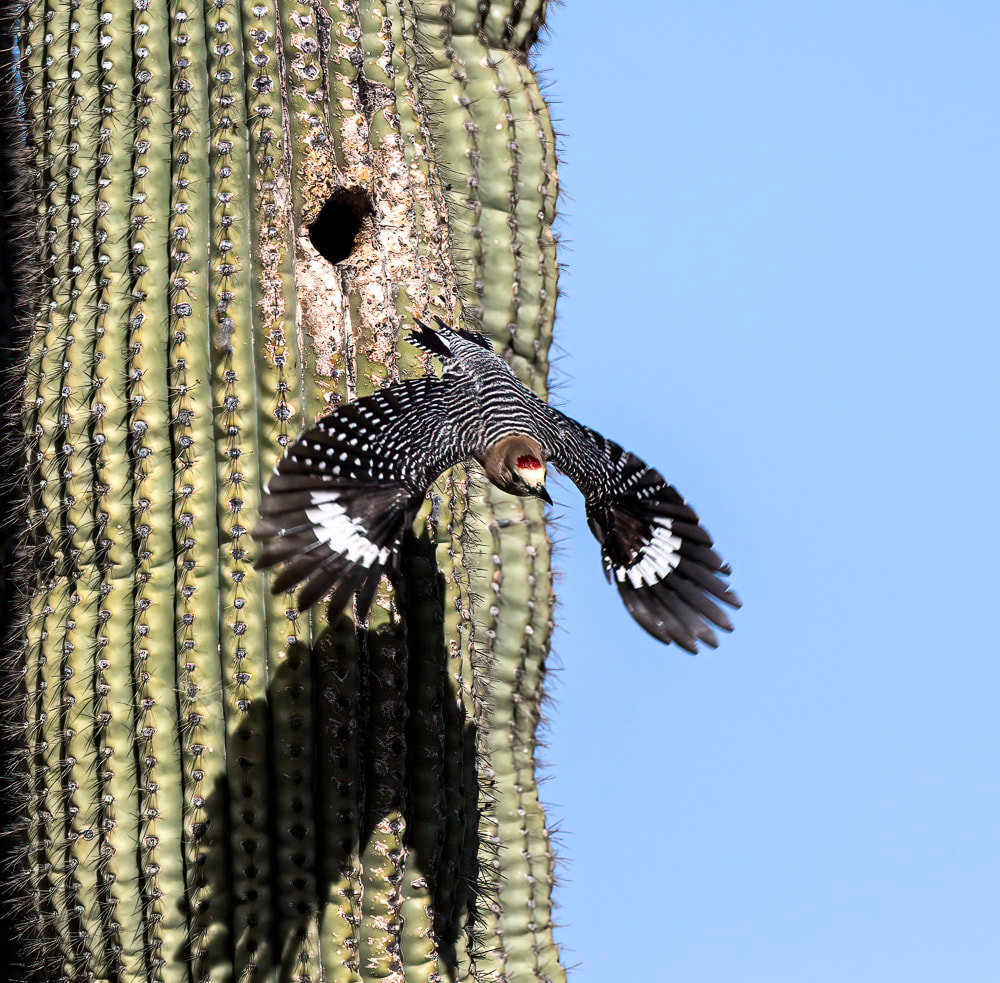
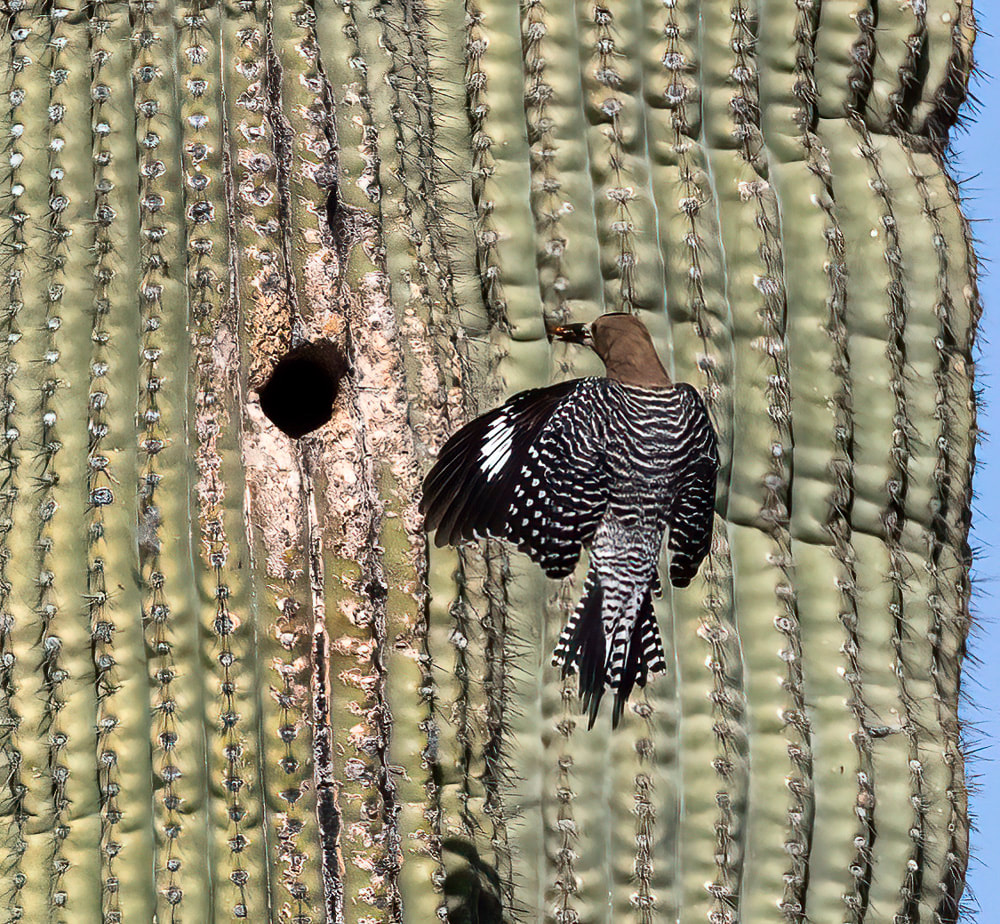
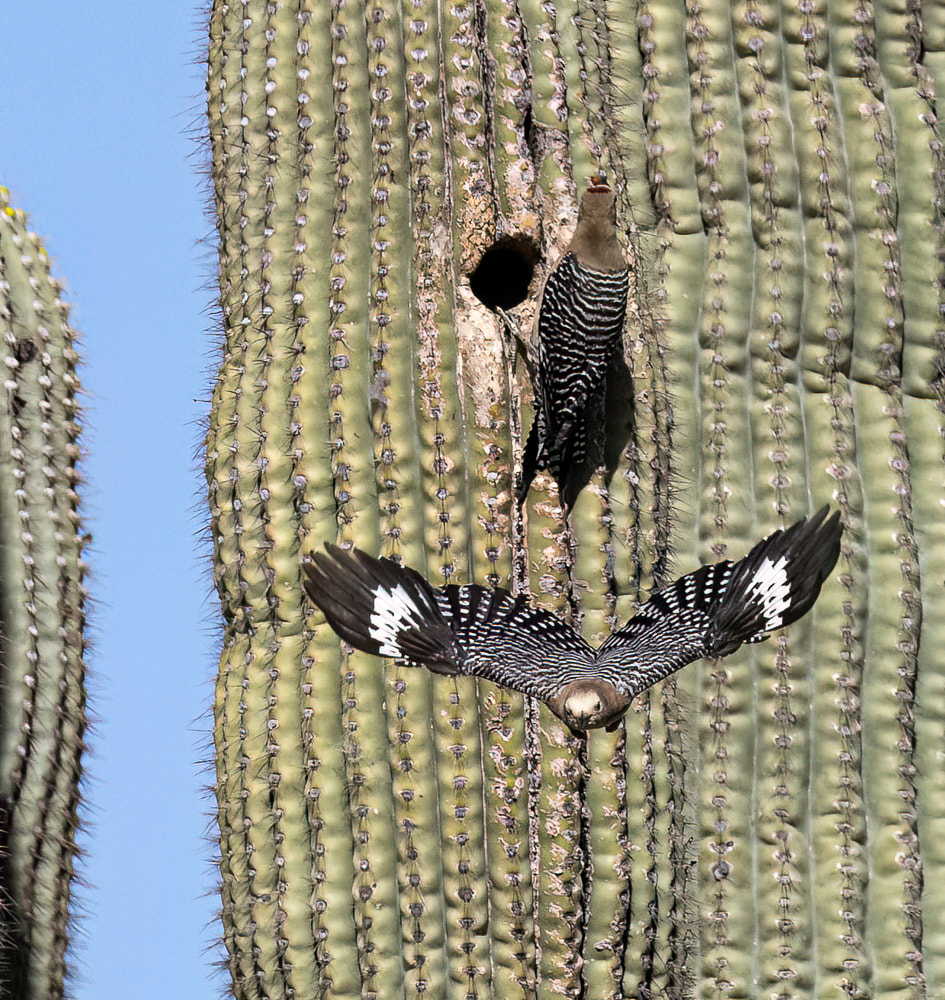
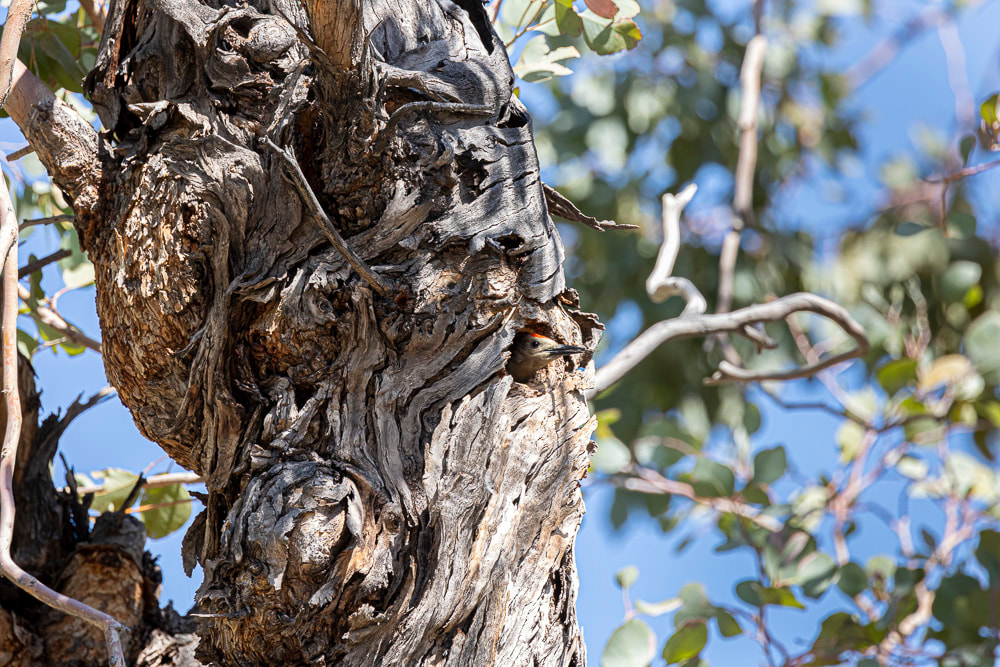
 RSS Feed
RSS Feed